Maximizing space in a vegetable garden isn’t just about cramming in as many plants as possible—it’s about smart, intentional design that enhances both growth and yield. Whether you're working with a sprawling backyard or a modest urban balcony, these 30 creative vegetable garden ideas can transform any area into a lush, productive oasis. By leveraging everything from vertical spaces to unique planting methods, you can grow an abundance of fresh, nutritious vegetables right at home.
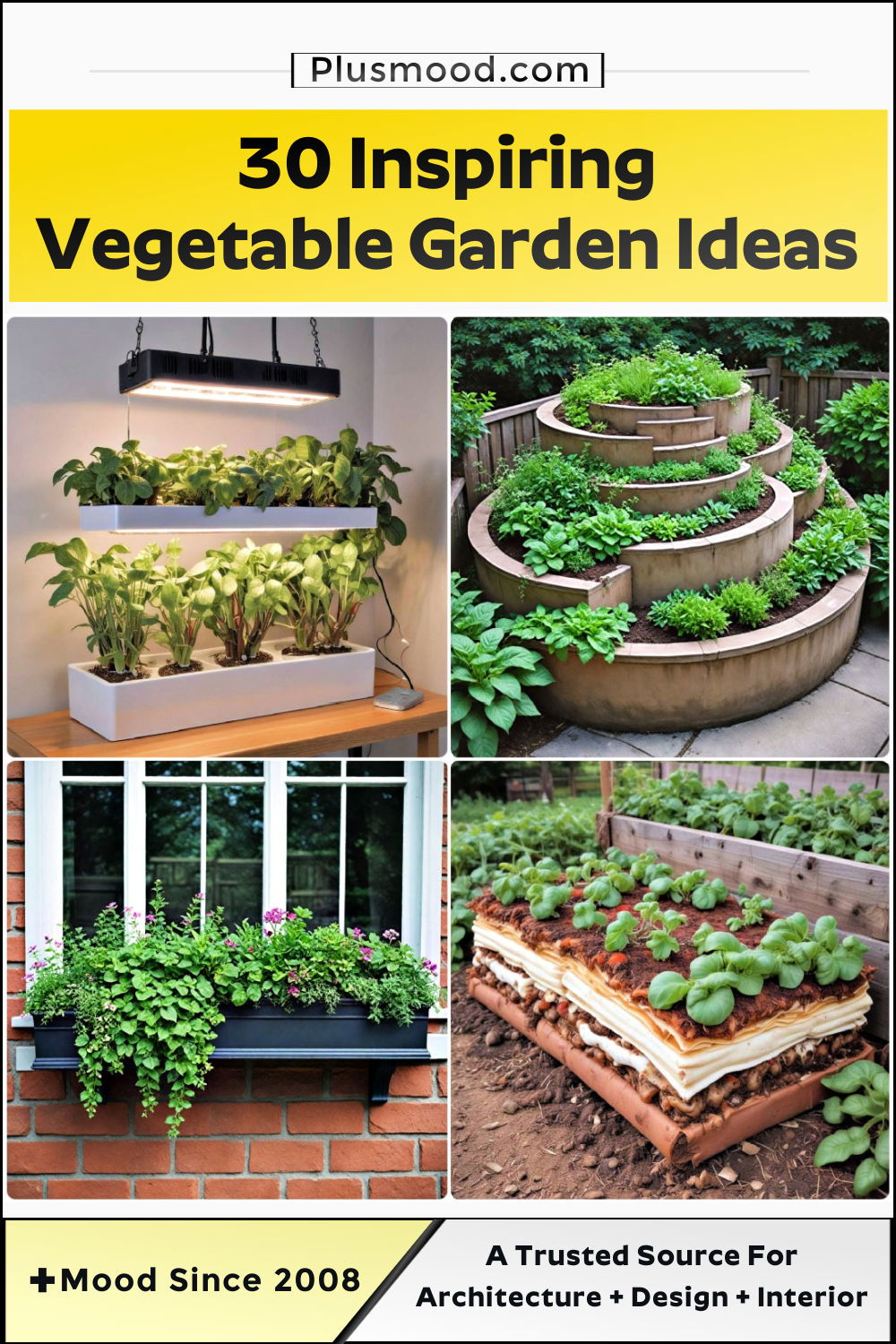
1. Raised Garden Beds
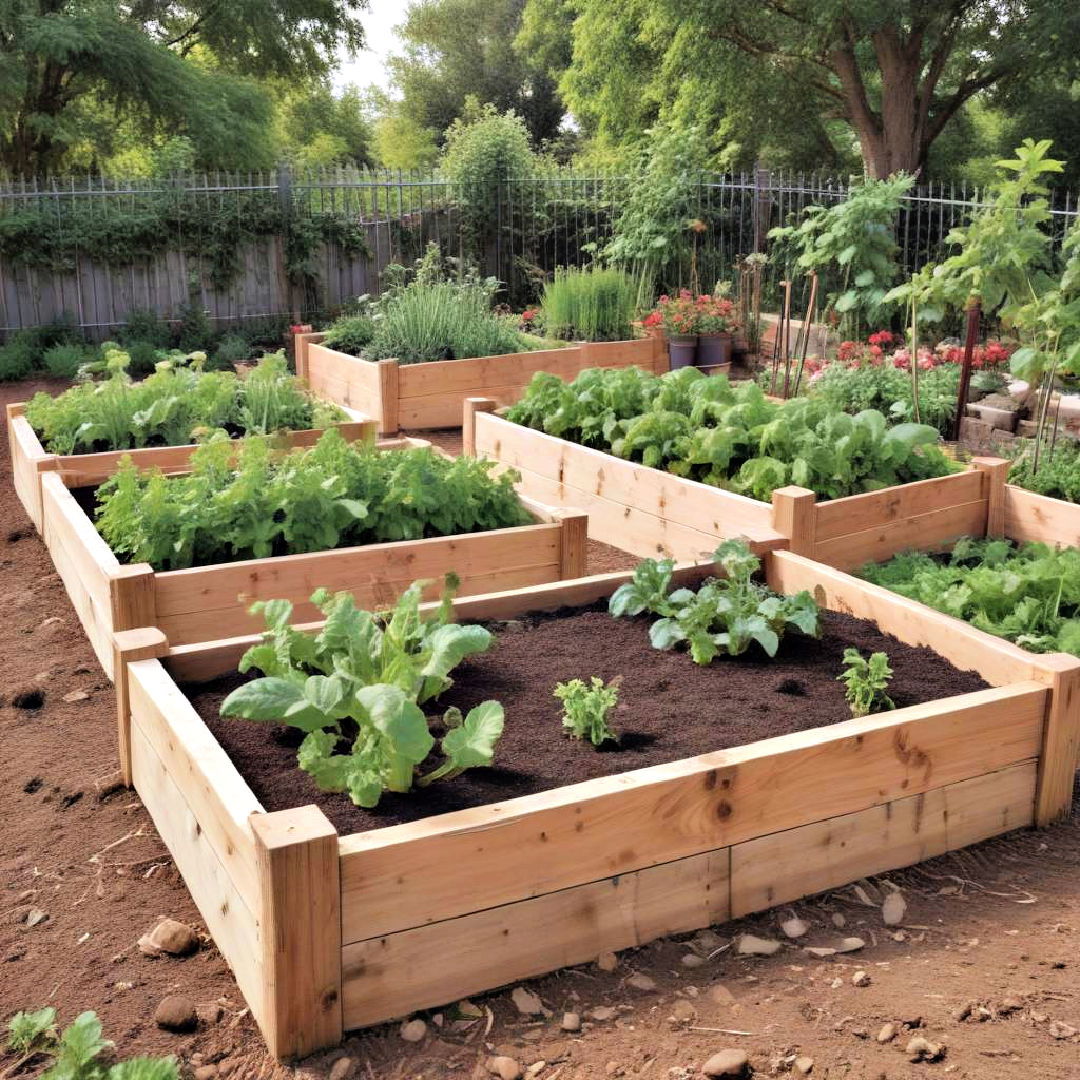
Think of raised garden beds as spacious, organized containers for your crops. They help improve drainage, prevent soil compaction, and reduce weed growth. Plus, they make planting, weeding, and harvesting a breeze since they're elevated. Built from wood, metal, or plastic, these boxes can be tailored to fit any garden space, alongside beautiful backyard gazebo ideas for a more cohesive outdoor design.
2. Vertical Gardening
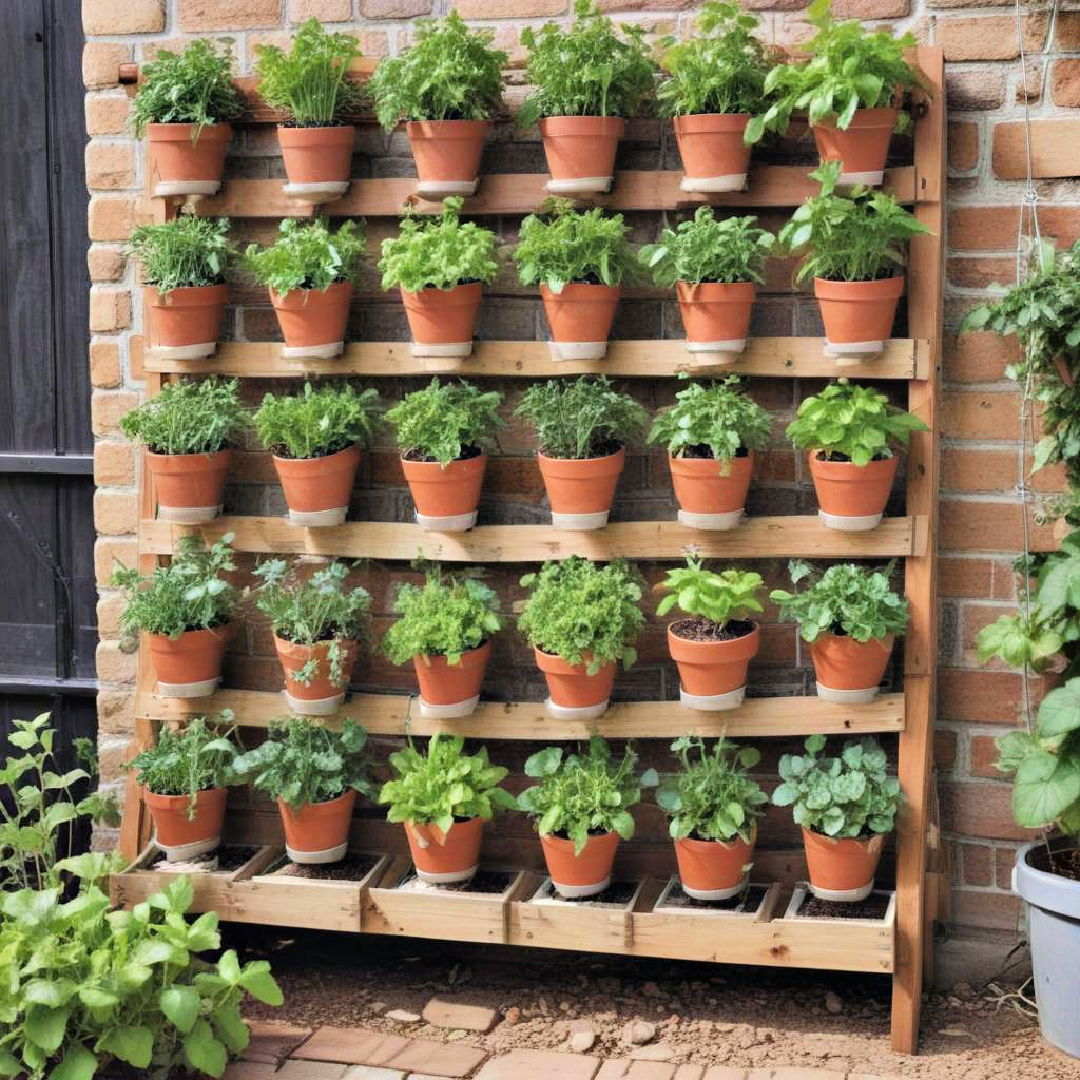
Vertical gardening is perfect for small spaces, especially when incorporating clever vertical garden ideas to make the most of every inch. Using shelves, hanging pots, or trellises, you grow plants upwards instead of outwards. This method maximizes limited areas and keeps plants off the ground, making it perfect for those working with small backyard ideas on a budget. Common plants for vertical gardens include peas, beans, and tomatoes.
3. Container Gardening
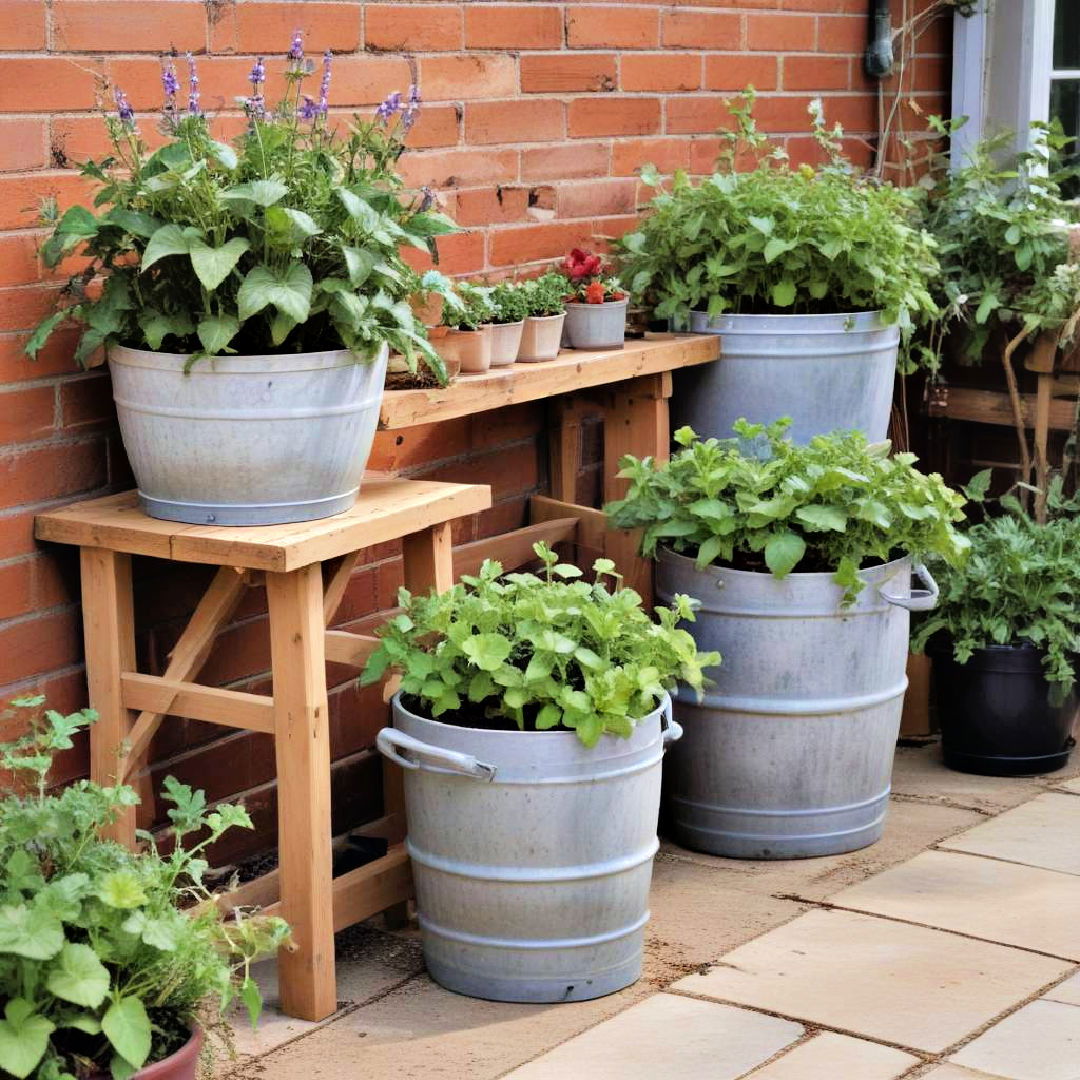
Discover creative vegetable garden ideas to grow fresh produce at home. Container gardening offers flexibility and mobility. It involves growing plants in pots, tubs, or barrels placed on patios, balconies, or even windowsills. Perfect for herbs, salad greens, or cherry tomatoes, this approach lets you garden without a traditional plot of land and is one of the most effective container garden ideas for small spaces.
4. Hydroponic Systems
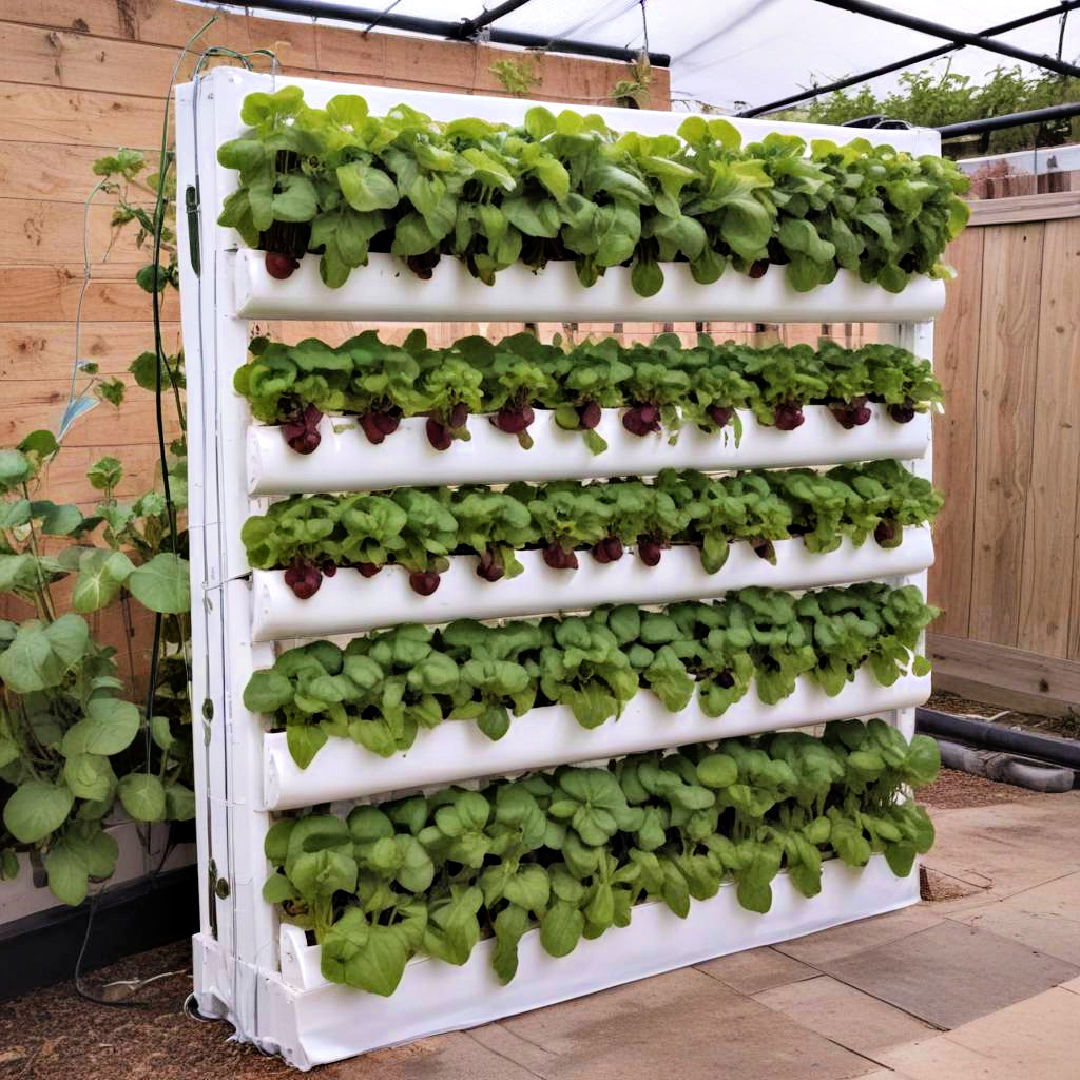
Hydroponic systems grow plants without soil. Instead, they use nutrient-rich water solutions, making it an efficient method to cultivate crops. These systems reduce the risk of soil-borne diseases and pests while using less water than traditional gardening. Ideal for leafy greens and herbs, hydroponics can be set up indoors or outdoors.
5. Square Foot Gardening

Square foot gardening divides growing space into small, manageable sections. This method encourages higher yields by planting crops closely together, which minimizes weeds and maximizes productivity. Perfect for beginners, it simplifies planning and ensures efficient use of space, making it a great fit for cheap backyard makeover ideas that work for any budget.
6. Companion Planting
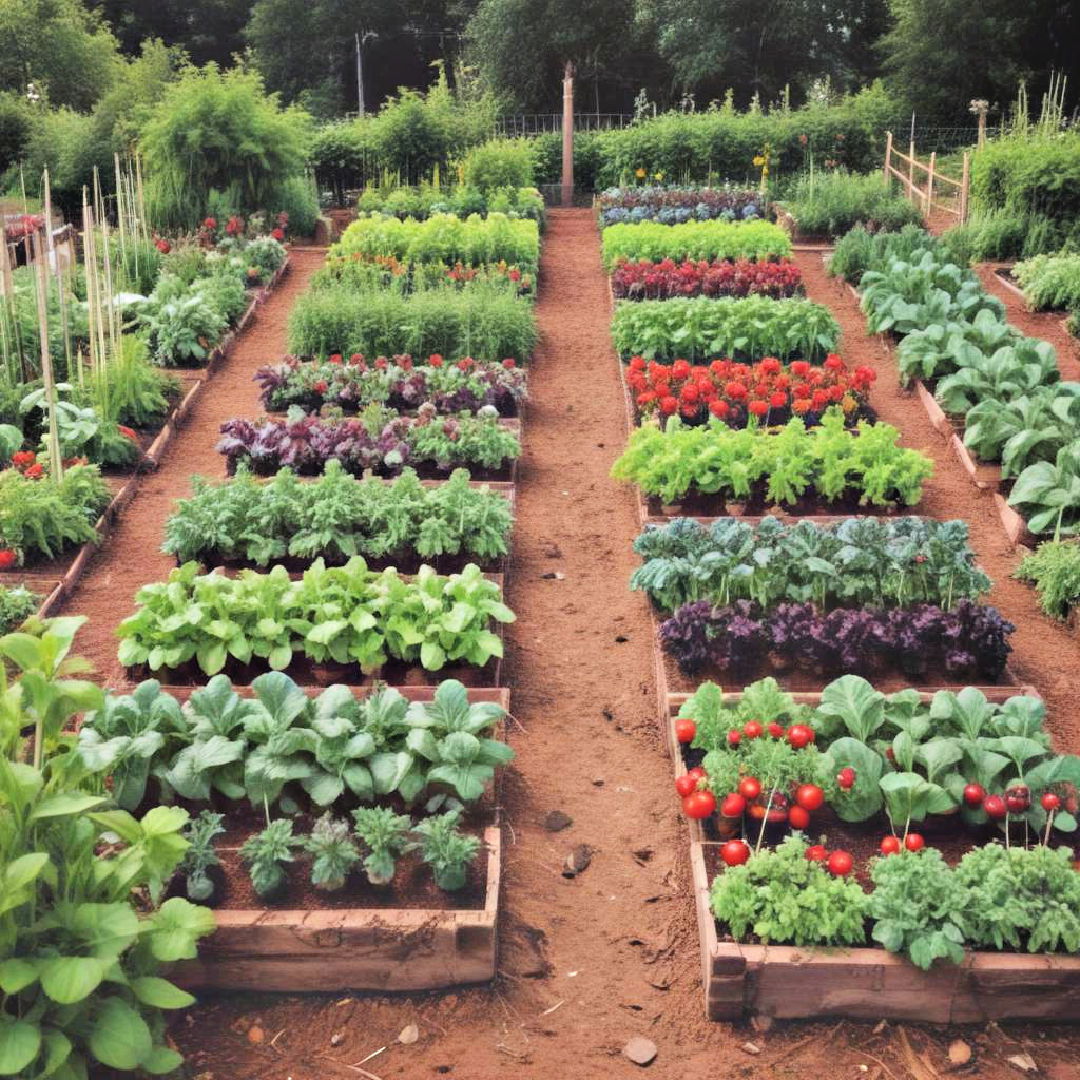
Companion planting is a strategic technique where different plants grow together to benefit each other. For example, planting basil near tomatoes can repel pests and improve growth, making it one of the best herb garden ideas to boost productivity. This approach enhances biodiversity, deters pests, and improves nutrient uptake, creating a healthier and more resilient garden ecosystem.
7. Keyhole Gardens
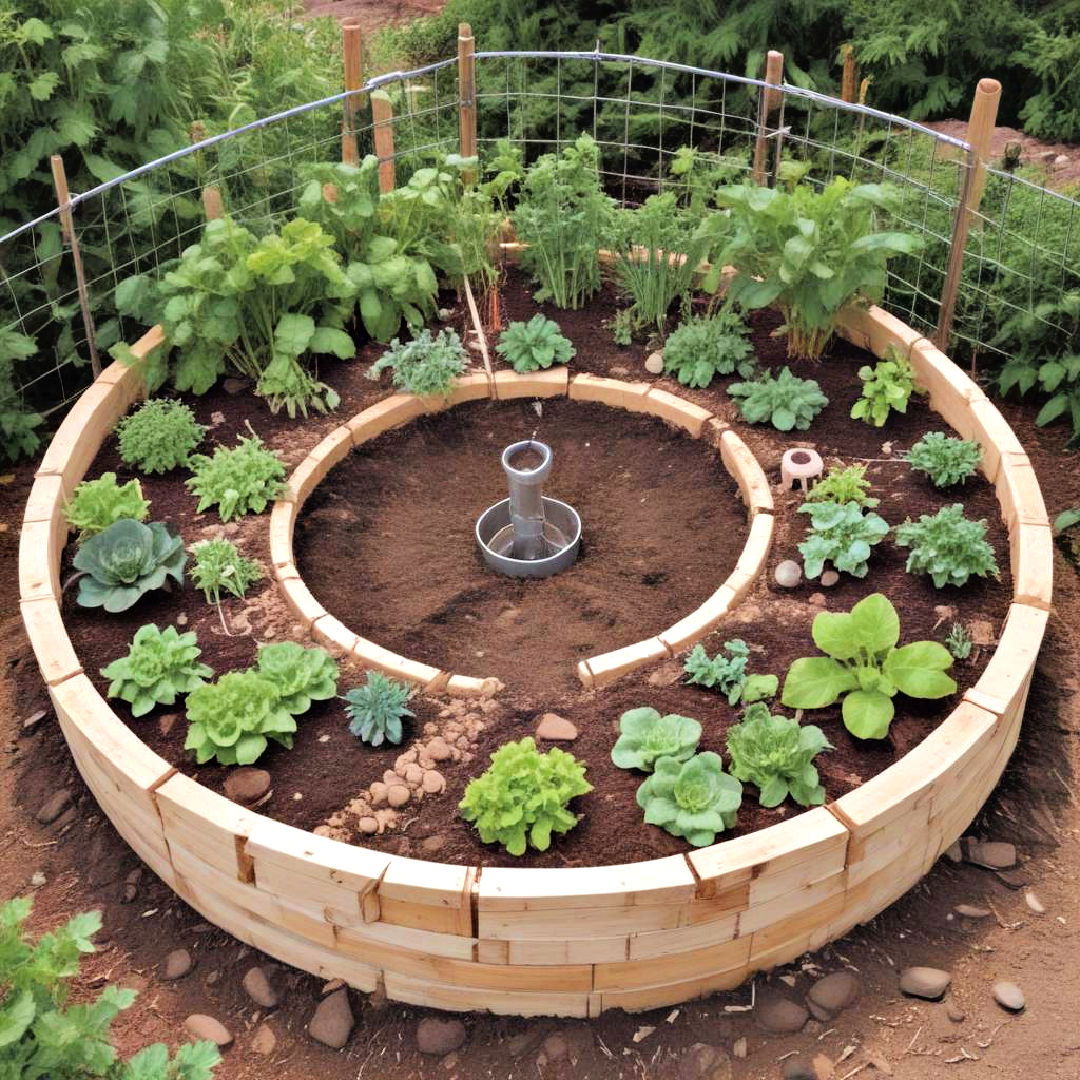
Keyhole gardens combine composting with gardening. Designed in a circular shape with a central compost basket, they allow kitchen scraps to turn into nutrient-rich soil. This approach conserves water, utilizes waste efficiently, and creates fertile planting areas perfect for vegetables. Ideal for regions with poor soil.
8. Raised Row Gardens
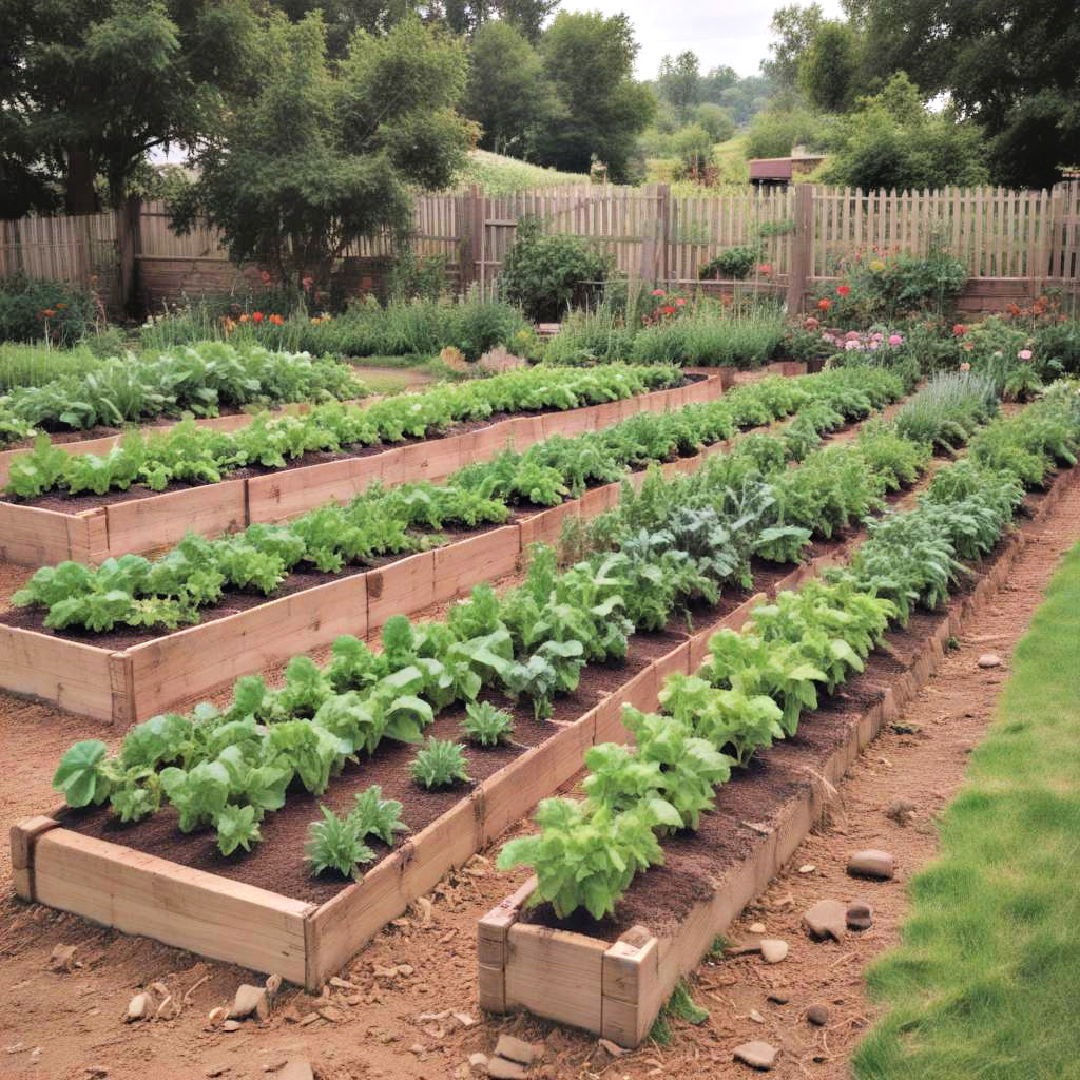
Transform your space with practical backyard vegetable garden ideas for a bountiful harvest. Raised row gardens offer a low-maintenance alternative to traditional planting. They involve creating raised mounds of soil where crops are planted, improving water drainage and root growth. This technique reduces soil compaction and erosion, making it perfect for root vegetables like carrots and potatoes.
9. Lasagna Gardening
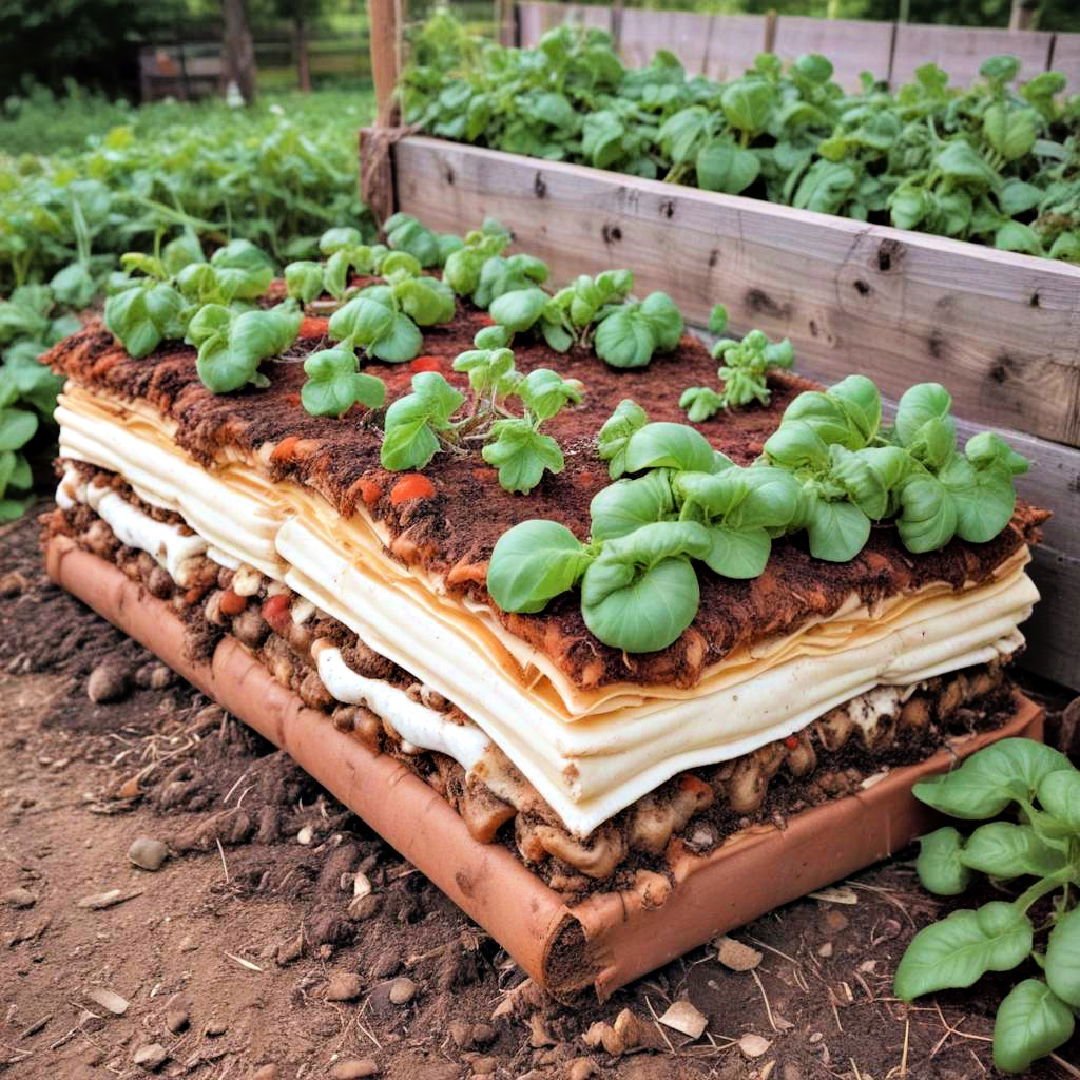
Lasagna gardening, or sheet composting, builds up soil using layers of organic material. You start with cardboard or newspaper as a base, then add layers of compost, leaves, and straw. This method enriches the soil over time, reduces weeds, and minimizes soil disturbance, making it great for nutrient-hungry plants.
10. No-Dig Gardens
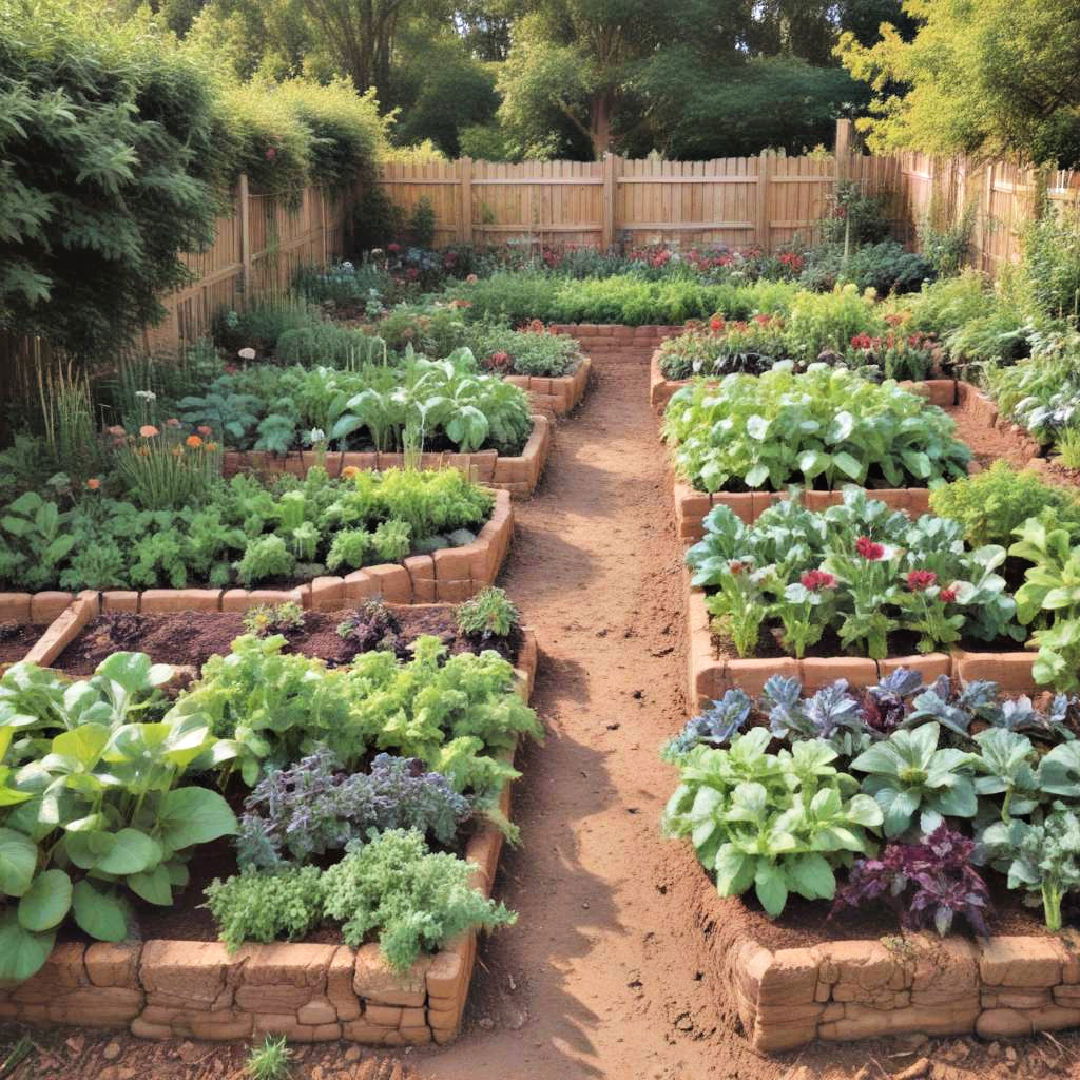
No-dig gardens focus on maintaining soil structure and health. By layering organic materials on top of the soil, you avoid disturbing the existing structure. This method encourages beneficial organisms and fungi to thrive, improves drainage, and reduces weed growth. It's ideal for busy gardeners seeking a productive yet low-effort approach.
11. Window Box Gardens
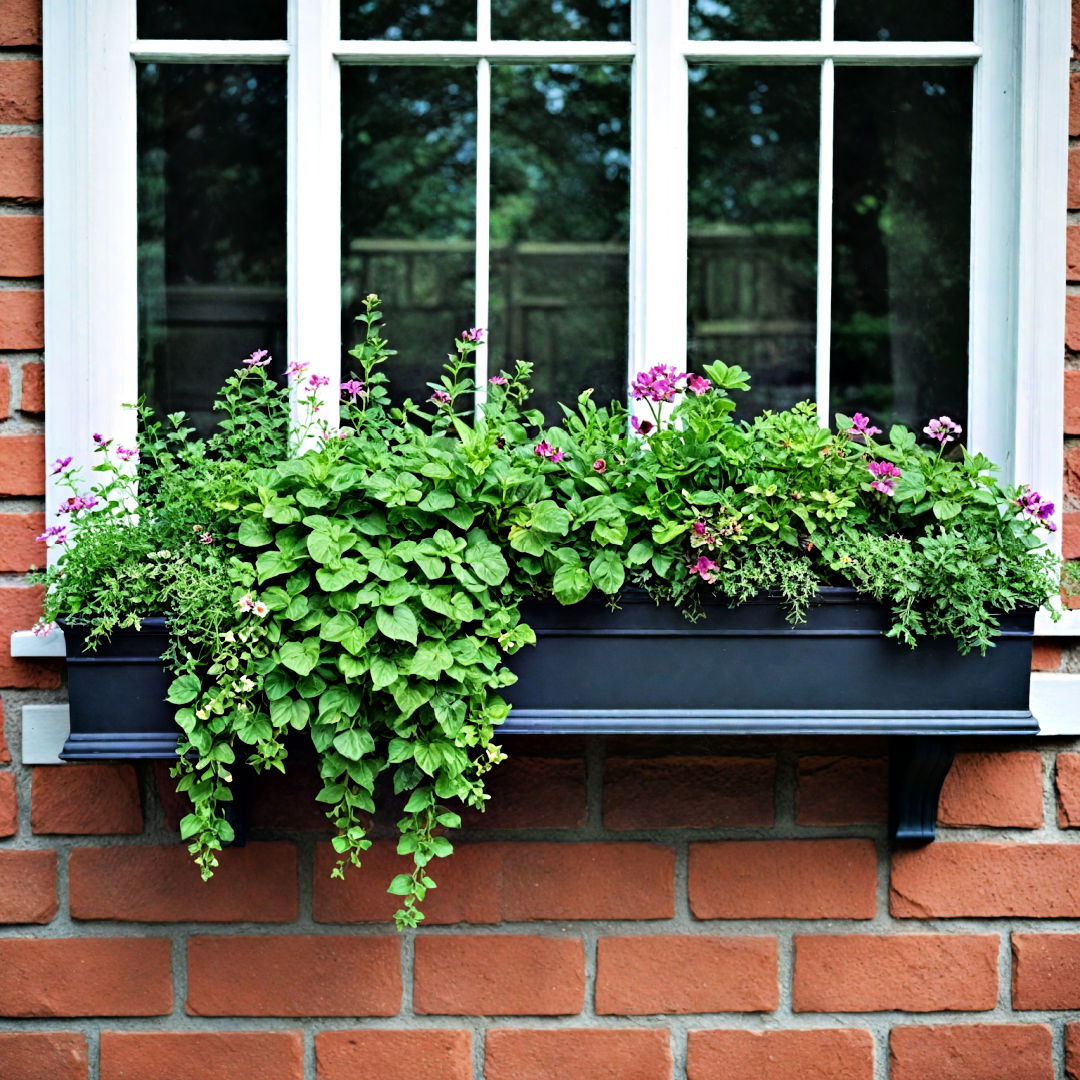
Window box gardens bring greenery to your windowsills. Perfect for herbs, flowers, or small vegetables, these containers add curb appeal and are easy to maintain. Their elevated position makes them less prone to pests and offers easy access for watering and harvesting. Ideal for urban dwellers or those with limited space.
12. Hugelkultur Beds
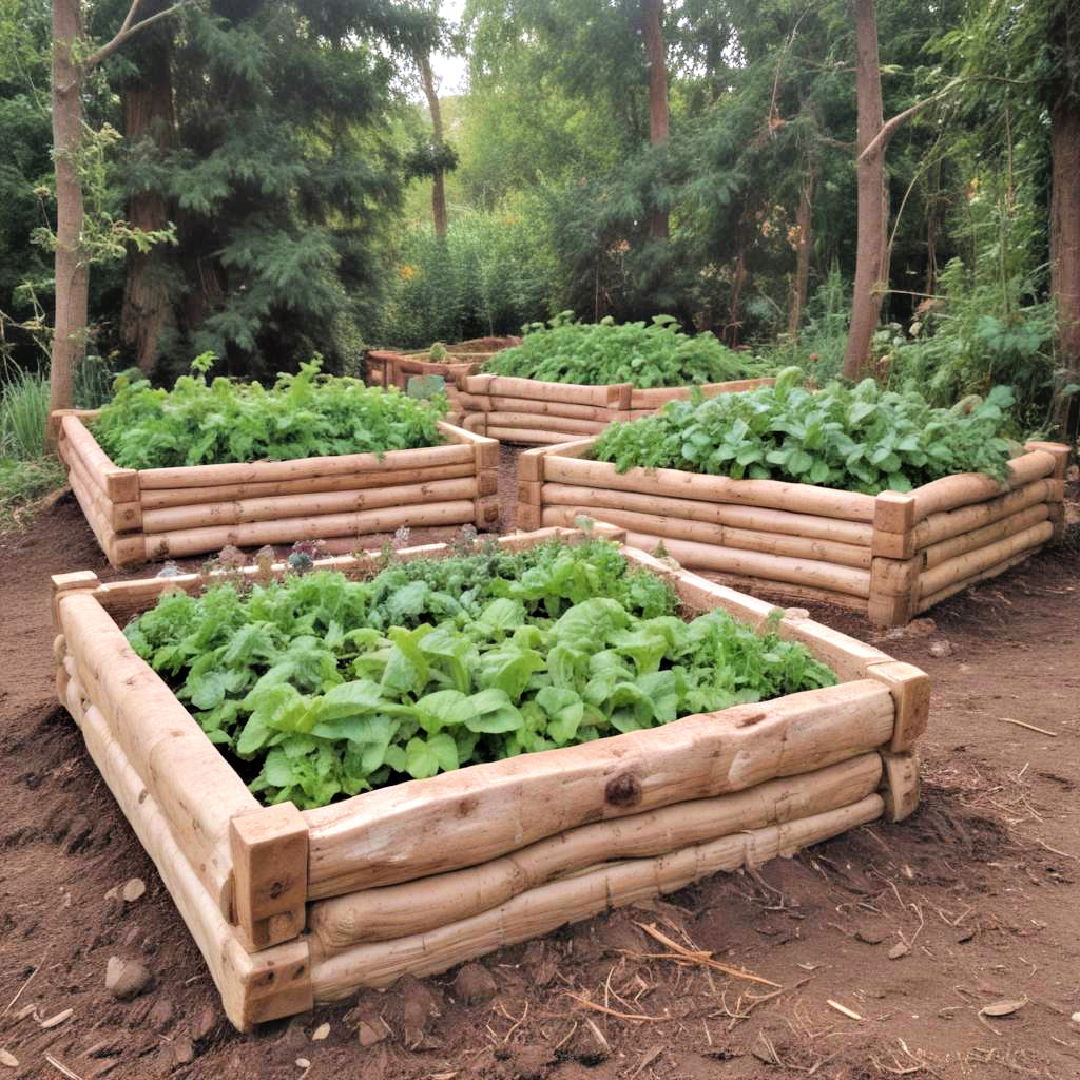
Hugelkultur beds involve creating raised beds filled with decaying wood and other organic materials. As the wood decomposes, it enriches the soil and retains moisture, reducing the need for watering. This method improves soil fertility over time and is perfect for diverse plantings, from veggies to flowers.
13. Polytunnel Gardening
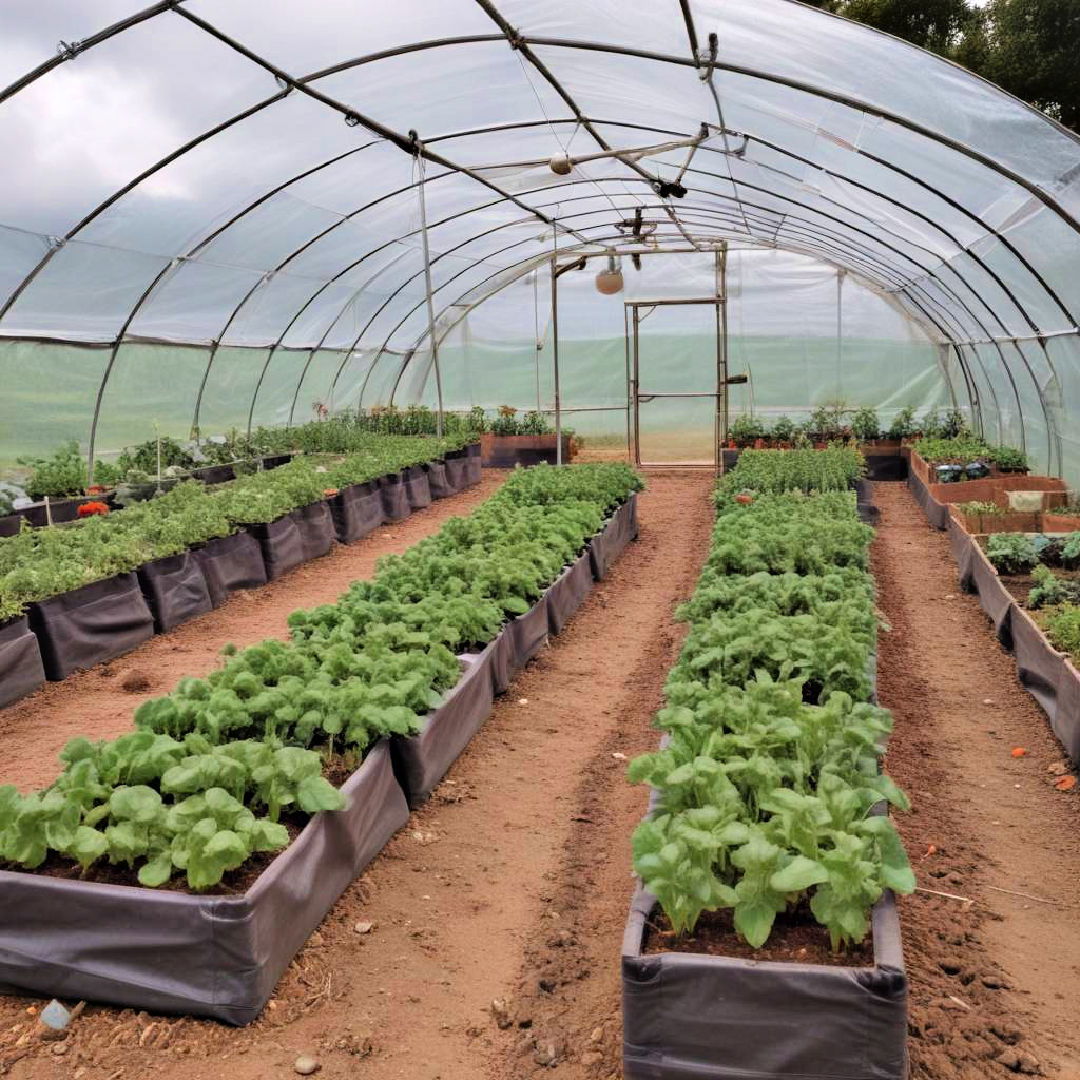
Polytunnels are versatile, protective structures made from polyethylene. They create a controlled environment ideal for extending growing seasons and protecting plants from harsh weather. Perfect for a wide range of veggies and fruits, polytunnels help maintain consistent temperatures and protect crops from pests.
14. Herb Spirals
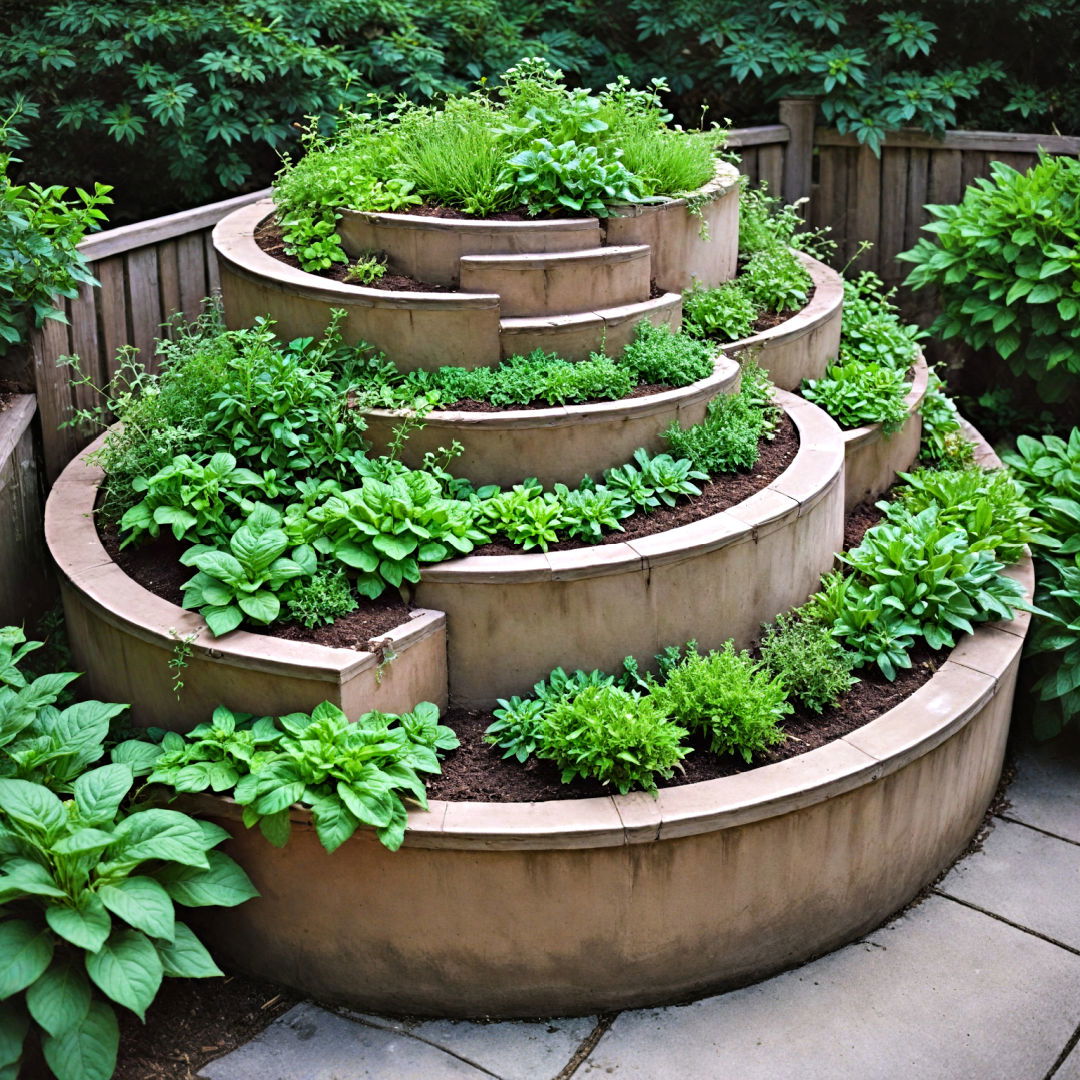
Herb spirals are a vertical gardening technique designed specifically for growing herbs. Constructed as spiral mounds, they optimize space, create various microclimates, and ensure easy access. This design allows you to grow a diverse range of herbs in a small area, making it both practical and visually appealing.
15. Community Gardens
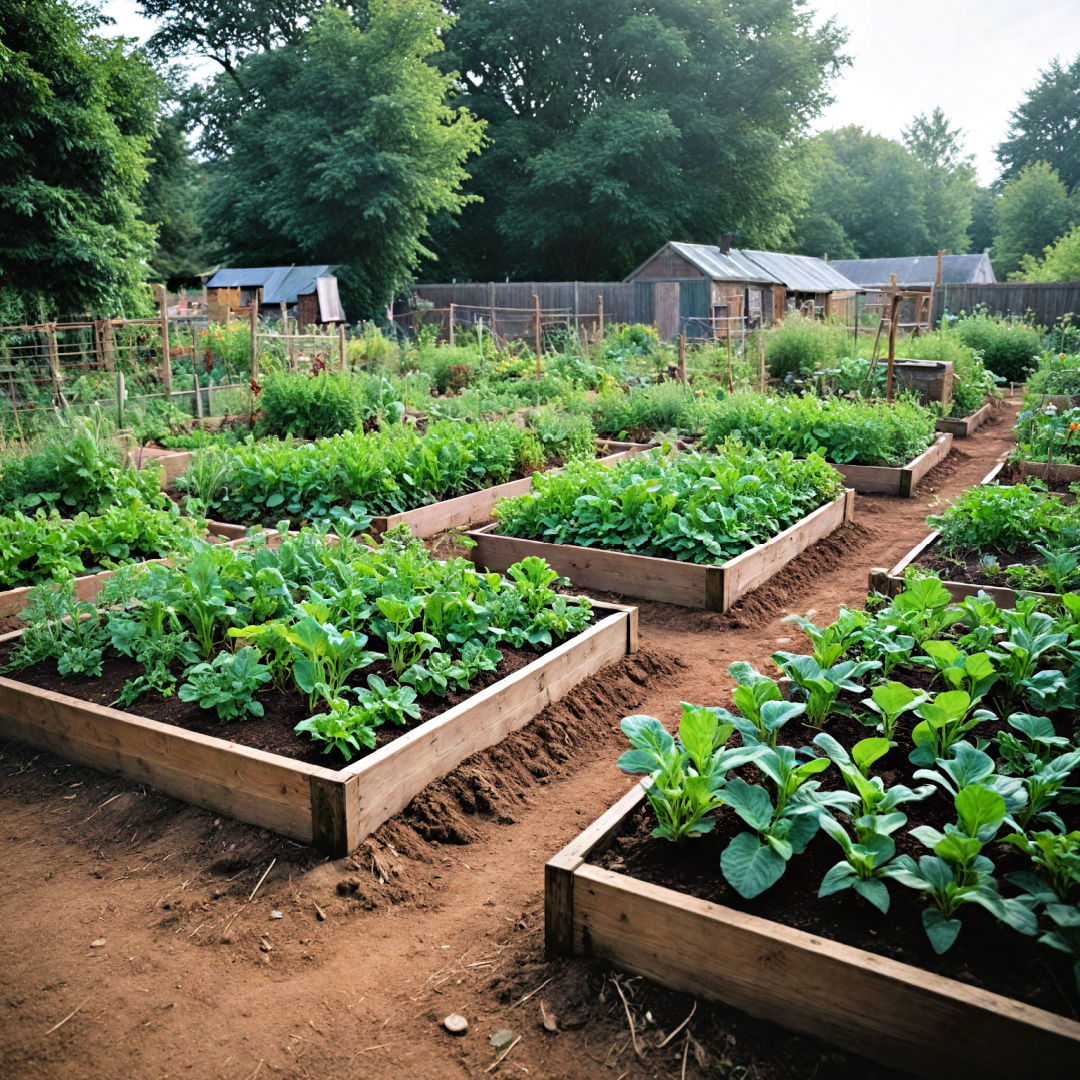
Explore simple and inspiring veggie garden ideas to start growing your own food. Community gardens offer shared spaces for cultivating crops. These gardens foster social interaction, provide fresh produce, and utilize communal resources efficiently. Gardeners of all skill levels contribute to and benefit from the collective effort, making it a fantastic option for urban environments.
16. Aquaponic Systems
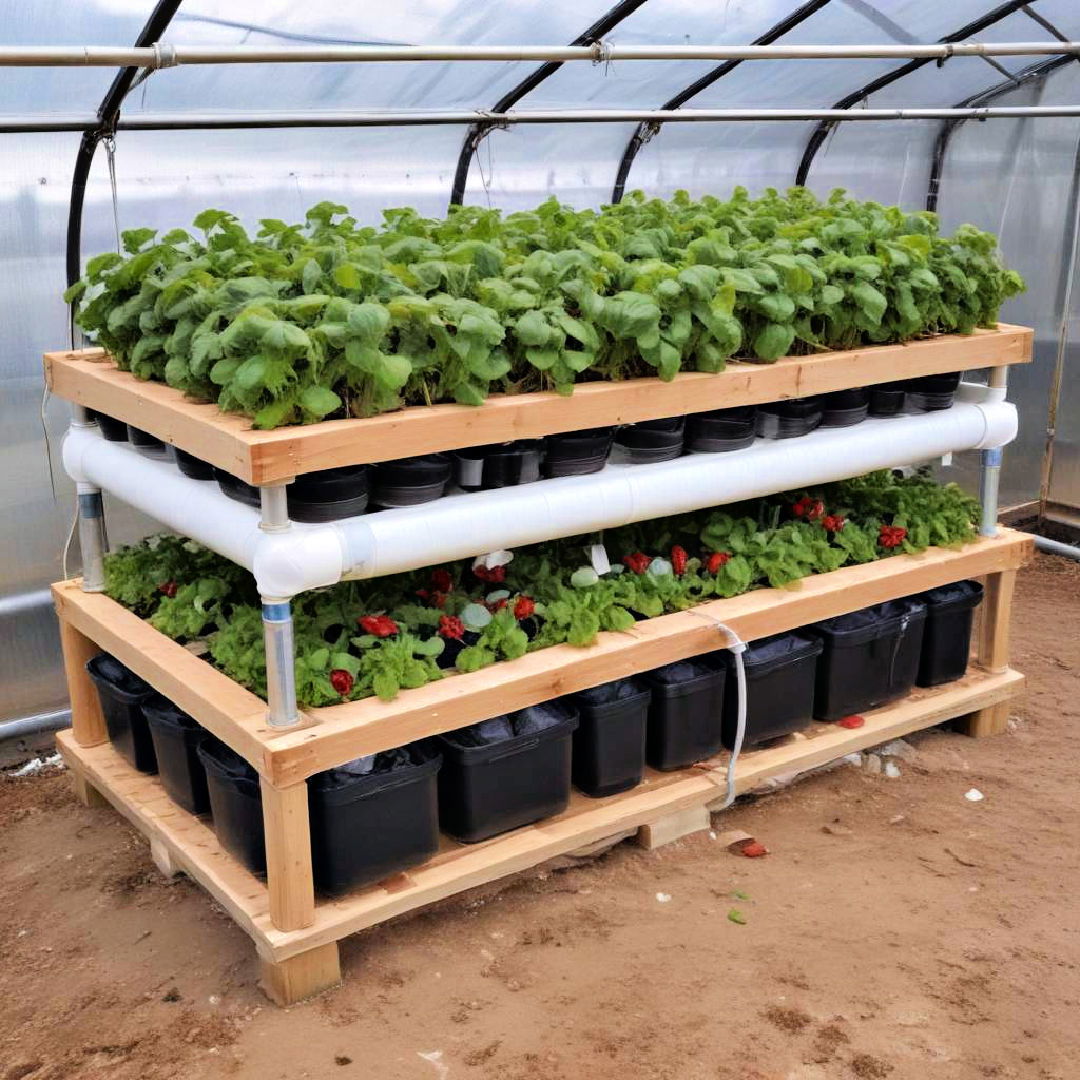
Aquaponic systems combine fish farming and hydroponics. Fish waste provides nutrients for plant growth, while plants help filter and clean the water for the fish. This symbiotic relationship enables sustainable food production and minimizes water usage. Suitable for leafy greens, herbs, and even some fruits.
17. Indoor Grow Lights
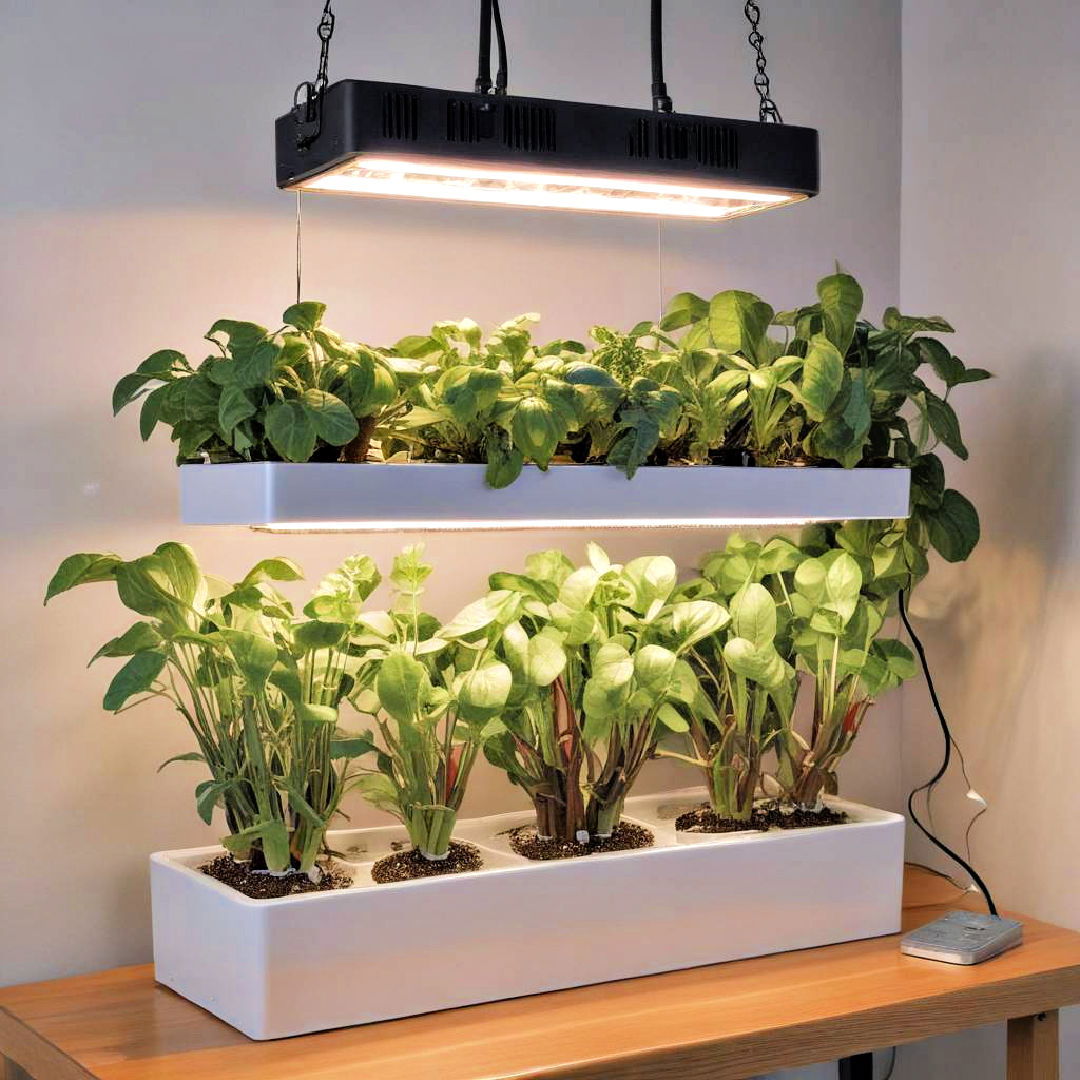
Indoor grow lights replicate sunlight, allowing you to cultivate plants indoors year-round. Adjustable light spectrums suit different growth stages from seedlings to mature plants. Perfect for apartment gardening, these systems give you control over growing conditions, enabling success with herbs, veggies, and flowers in your favorite indoor garden ideas setup.
18. Cold Frames
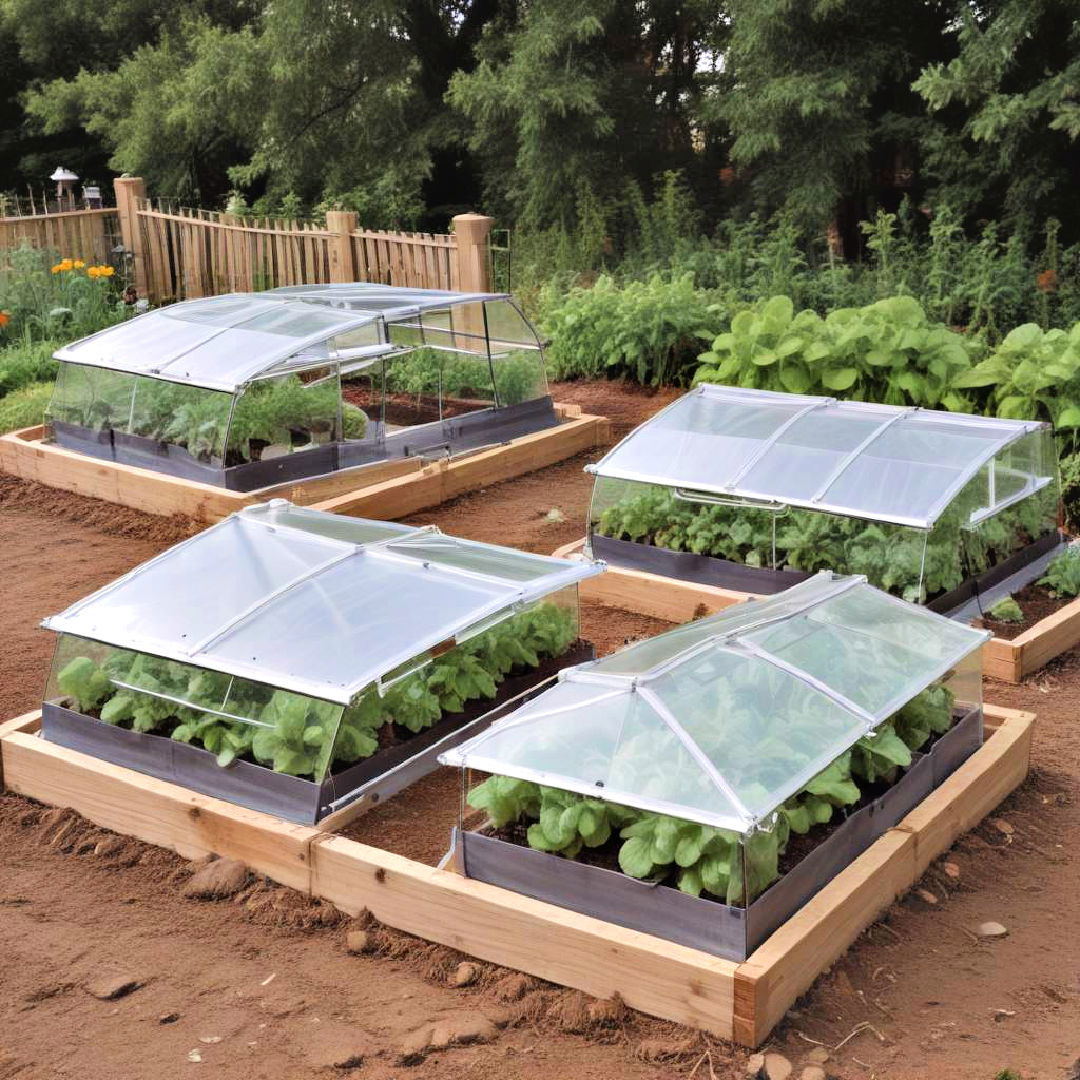
Cold frames are mini-greenhouses placed directly on the ground. They use transparent covers to trap warmth and protect plants from cold weather, extending the growing season. Ideal for hardening off seedlings and growing hardy vegetables like lettuce and spinach, cold frames are easy to construct and maintain.
19. Straw Bale Gardens

Straw bale gardens use straw bales as planting containers. The straw decomposes, creating rich, fertile growing environments. Add compost and plant seedlings directly into the bales, which retain moisture and heat, promoting rapid growth. This affordable and unique method can grow everything from tomatoes to cucumbers.
20. Wicking Beds
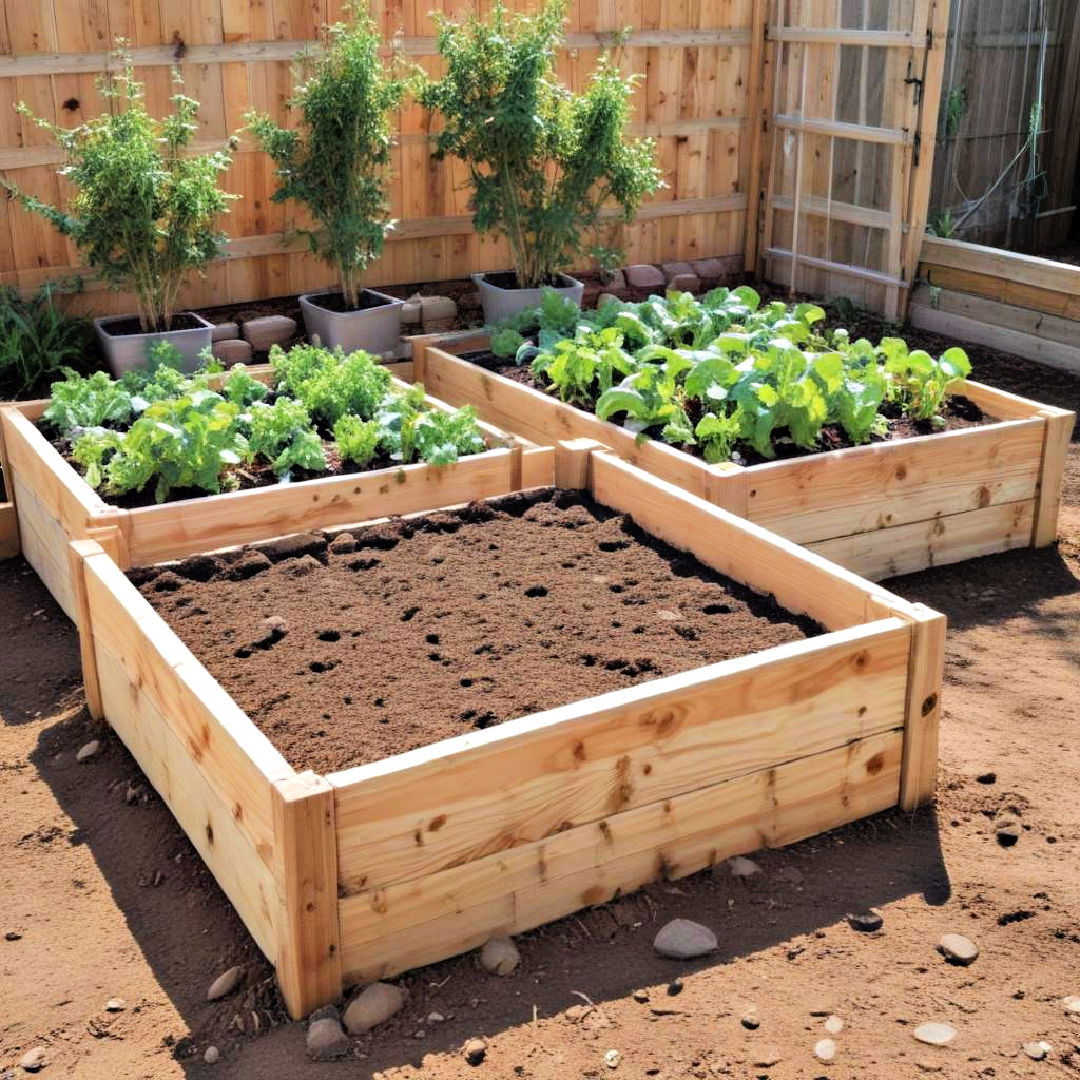
Wicking beds are self-watering gardens designed to keep soil consistently moist. Built with a reservoir beneath the soil, water is drawn up through capillary action. This system conserves water, reduces maintenance, and ensures optimal hydration for plants. Wicking beds are great for thirsty crops like tomatoes and peppers.
21. Moon Gardens
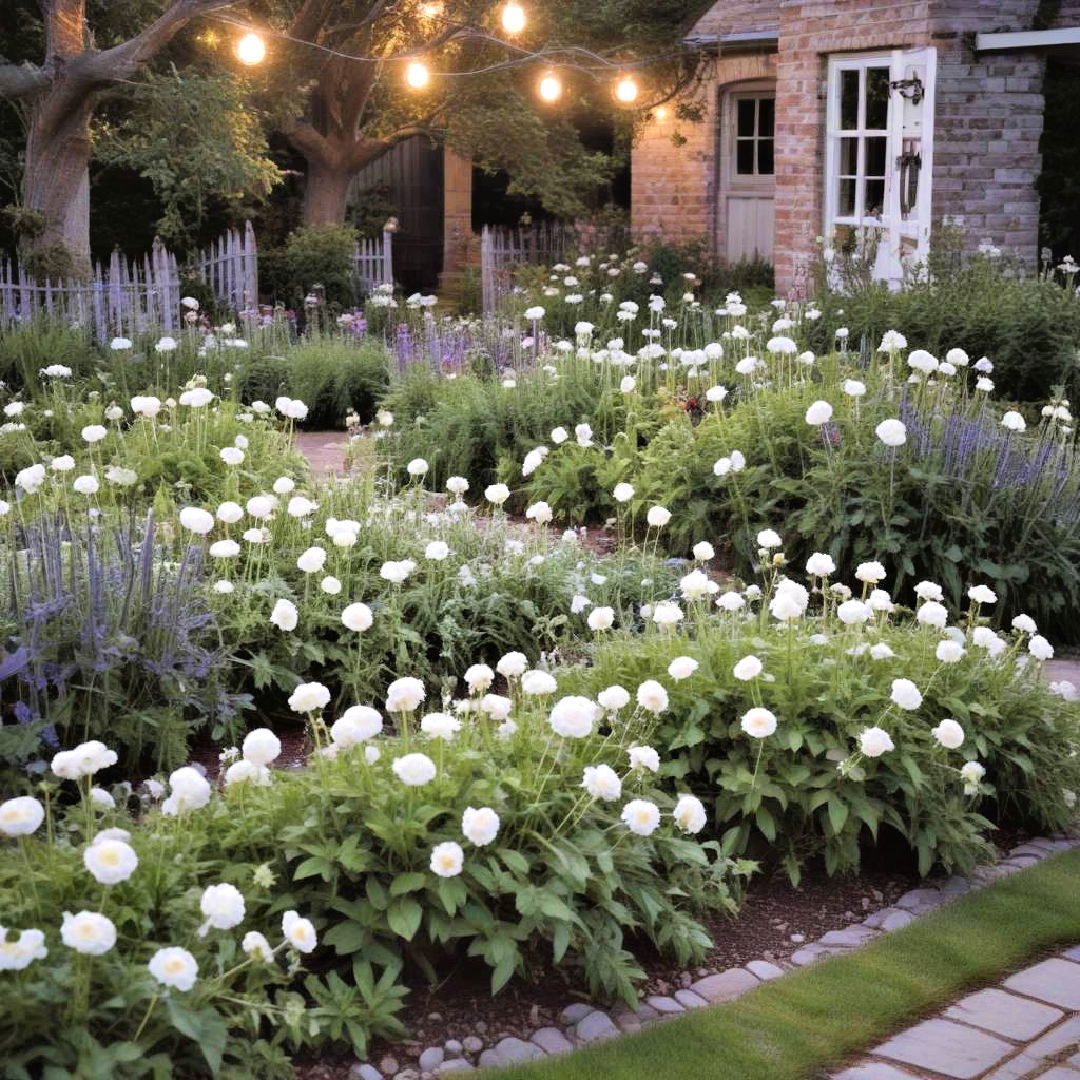
Moon gardens are designed to be enjoyed at night, featuring plants with white flowers and silver foliage that glow under moonlight. Ideal plants include jasmine, evening primrose, and lamb’s ear. Not only do they have a serene aesthetic, but they also provide a soothing atmosphere for evening relaxation and reflection.
22. Succession Planting
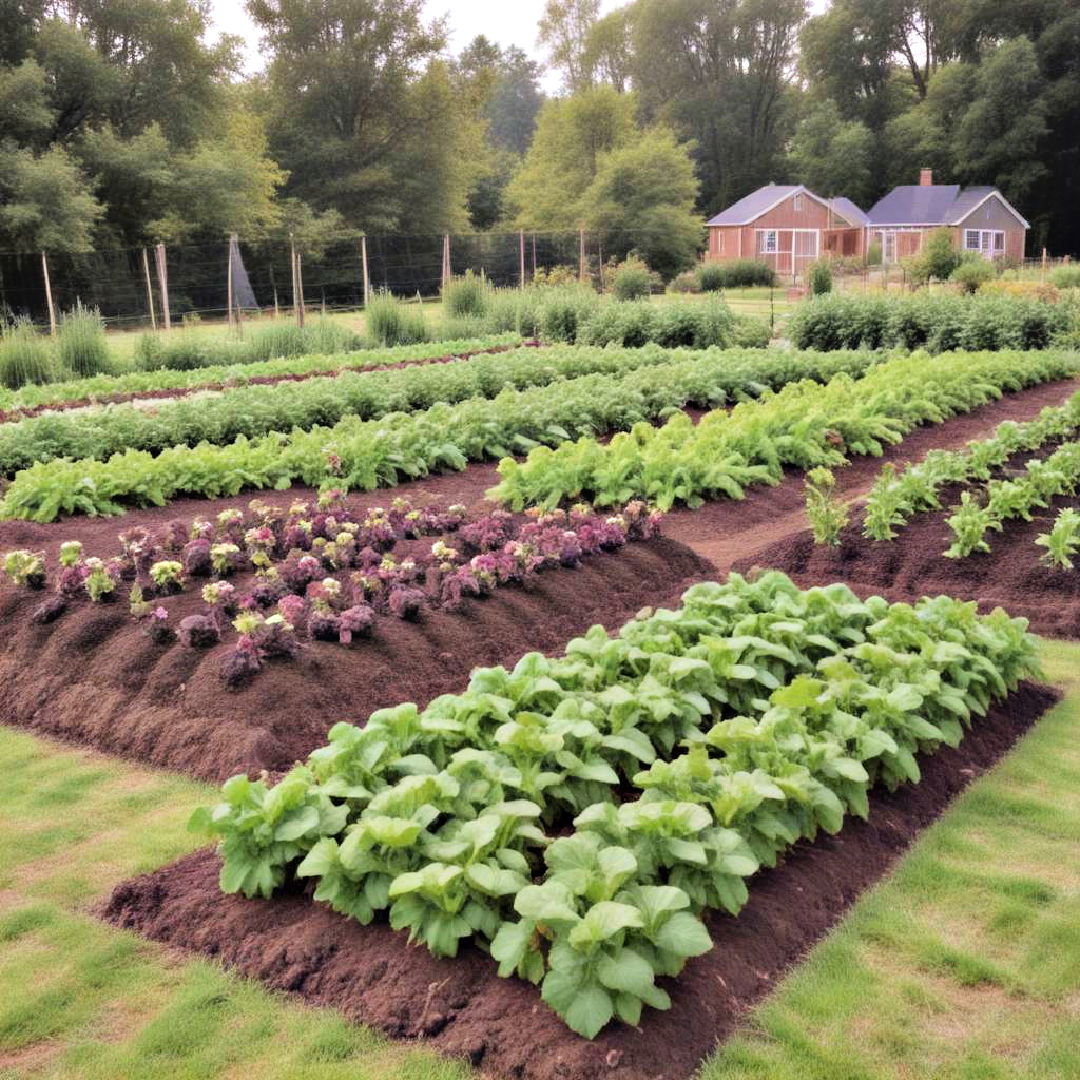
Get inspired by unique vegetables garden ideas to maximize your growing space. Succession planting involves planting new crops as soon as old ones are harvested. This method maximizes yield and ensures a continuous supply of fresh produce. Ideal for fast-growing crops like lettuce, radishes, and carrots, it keeps your garden productive throughout the growing season.
23. Edible Landscaping
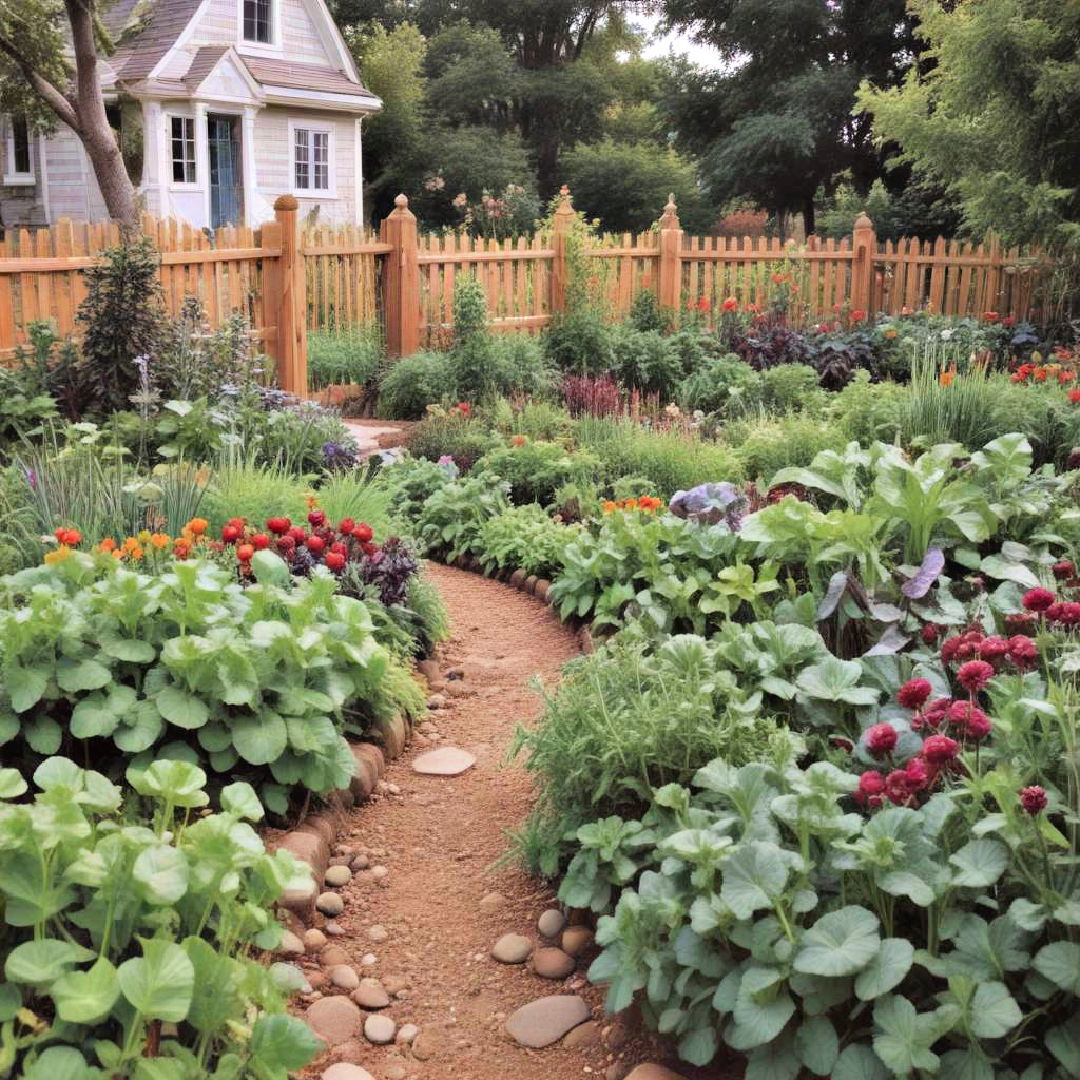
Edible landscaping combines ornamental plants with vegetables, fruits, and herbs. This dual-purpose approach creates aesthetically pleasing gardens that also provide fresh produce. Blueberry bushes, kale, and chives are examples of plants that can both beautify your space and fill your pantry.
24. Keyhole Gardens
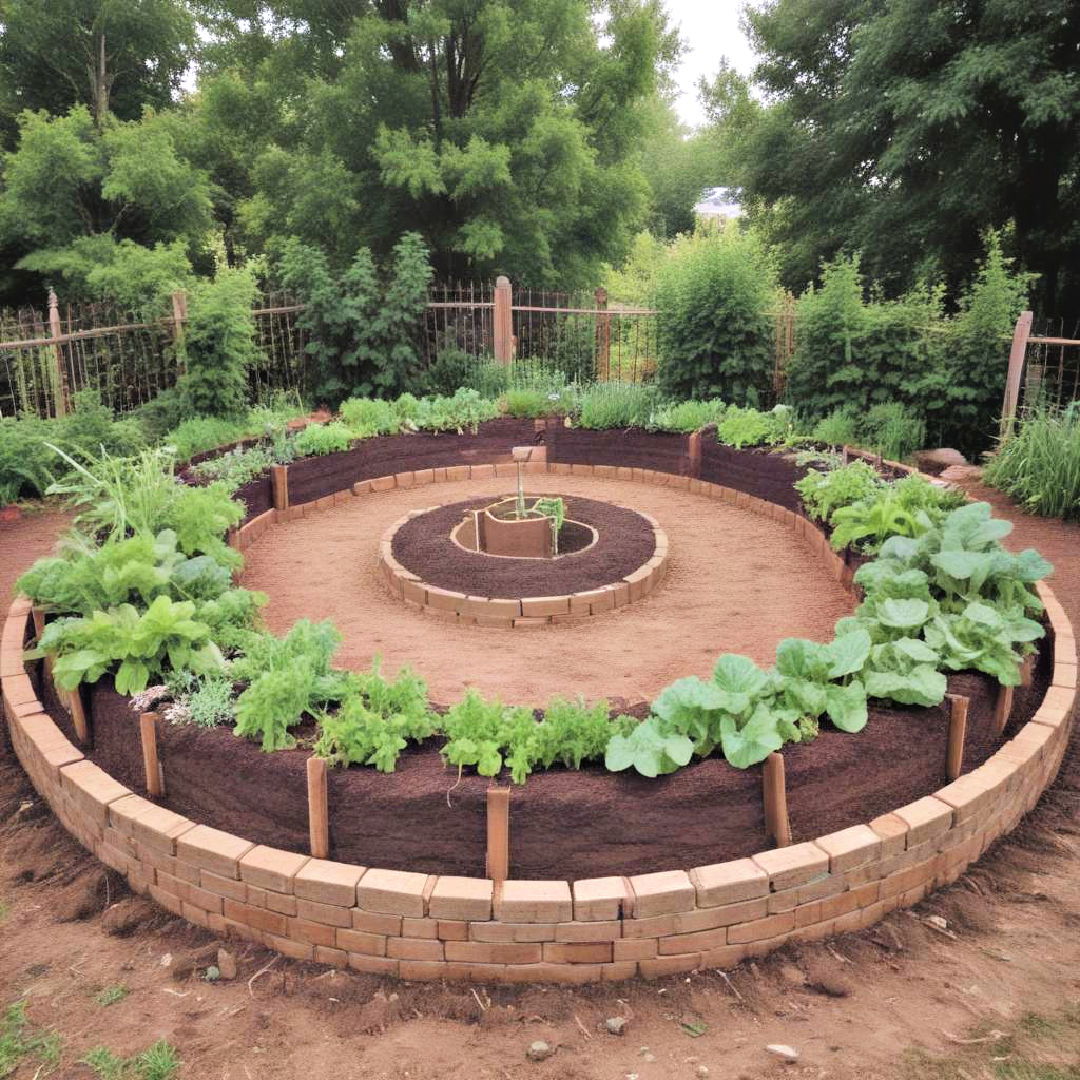
Keyhole gardens are circular raised beds with a composting basket in the center. You'll throw kitchen scraps into the basket, enriching the surrounding soil. These gardens conserve water and create nutrient-rich environments, making them perfect for dry climates and a variety of vegetables.
25. Spiral Gardens

Spiral gardens are stacked, circular gardens that maximize vertical space. They create a variety of microclimates, making them suitable for growing diverse plants like herbs, succulents, and even flowers. The design allows easy access to all plants and uses minimal ground space, making it ideal for yards with limited room.
26. Urban Rooftop Gardens
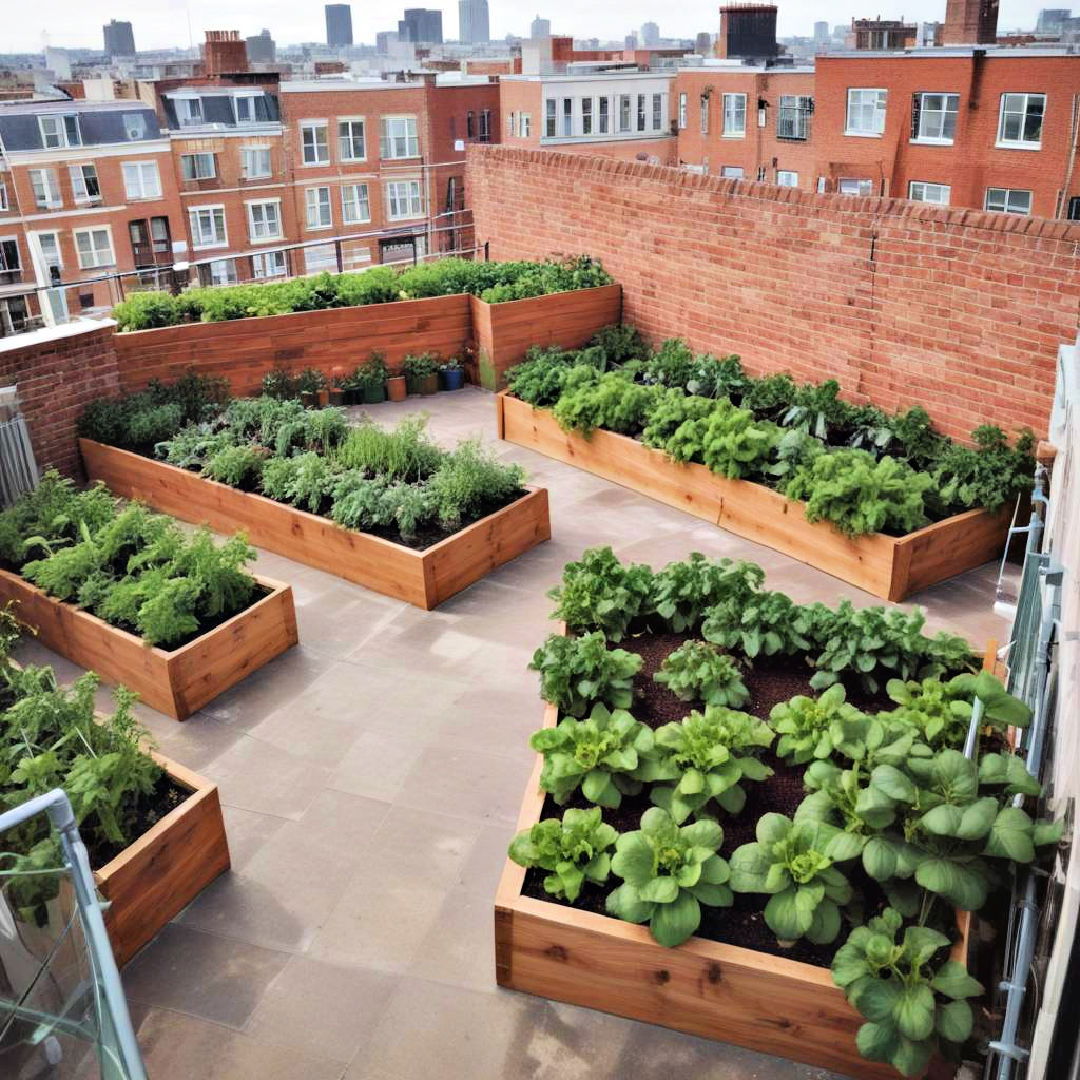
Urban rooftop gardens transform unused roof space into lush, productive gardens. They combat urban heat islands, offer fresh produce, and provide a green retreat, much like various backyard oasis ideas that can transform rooftop spaces. Suitable plants include hardy grasses, succulents, and low-maintenance vegetables. These gardens promote sustainability and enhance urban living environments.
27. Permaculture Gardens
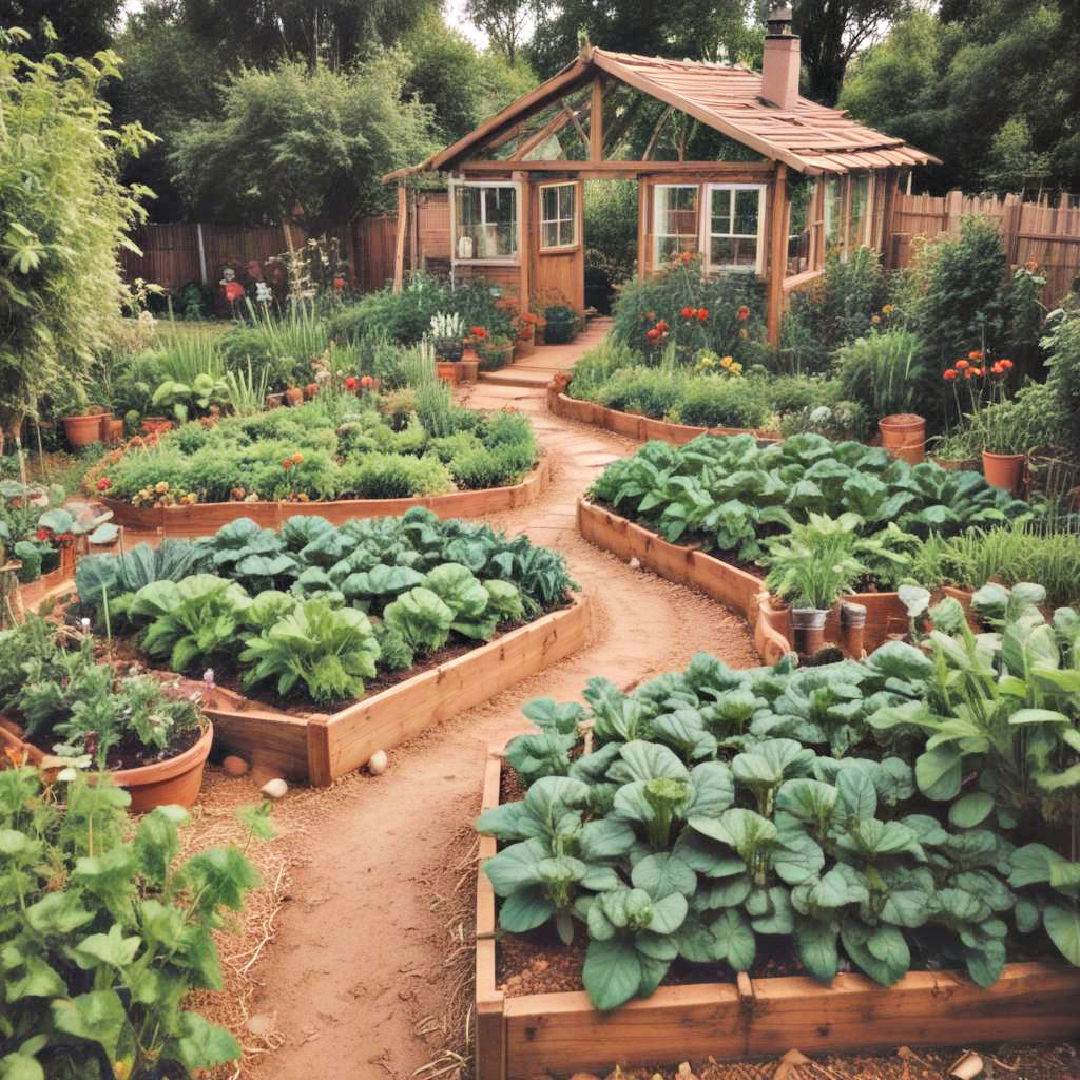
Permaculture gardens are designed to work with nature, focusing on sustainability and self-sufficiency. These gardens utilize companion planting, water conservation techniques, and plant diversity to create resilient ecosystems. Ideal for those aiming to reduce their environmental footprint, they can grow a wide array of crops.
28. Self-Watering Containers
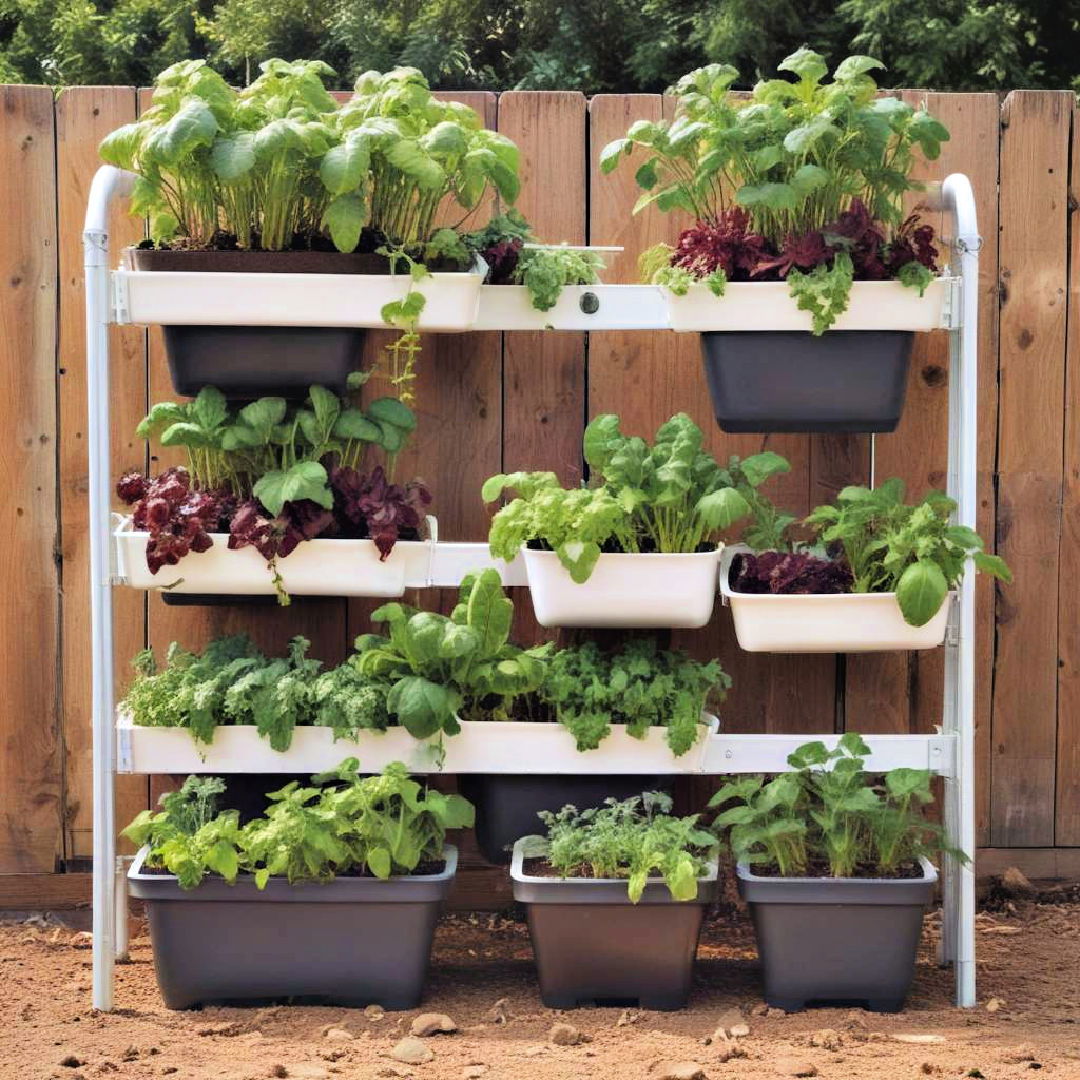
Self-watering containers feature a water reservoir at the bottom, allowing plants to draw up moisture as needed. This system reduces the need for frequent watering and helps prevent over- or under-watering. Perfect for busy gardeners, these containers work well with herbs, flowers, and small vegetables.
29. Row Covers
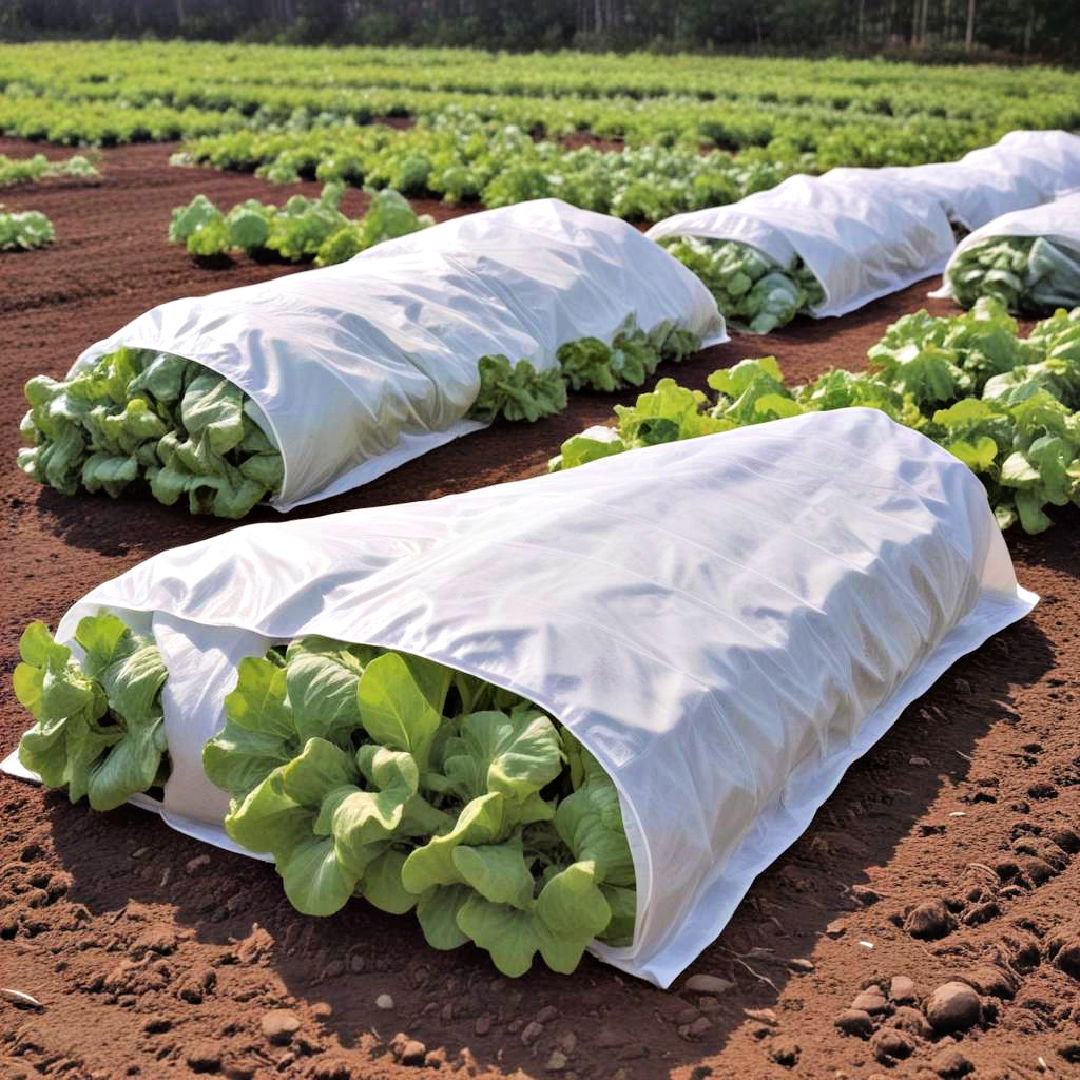
Find practical and stylish outdoor vegetable garden ideas for a thriving garden. Row covers are lightweight fabrics placed over plants to protect them from pests, frost, and extreme weather. These covers help maintain a warm microclimate, extending the growing season and improving yield. Ideal for vegetables like lettuce and cabbage, they are easy to install and remove as needed.
30. Square Foot Gardens
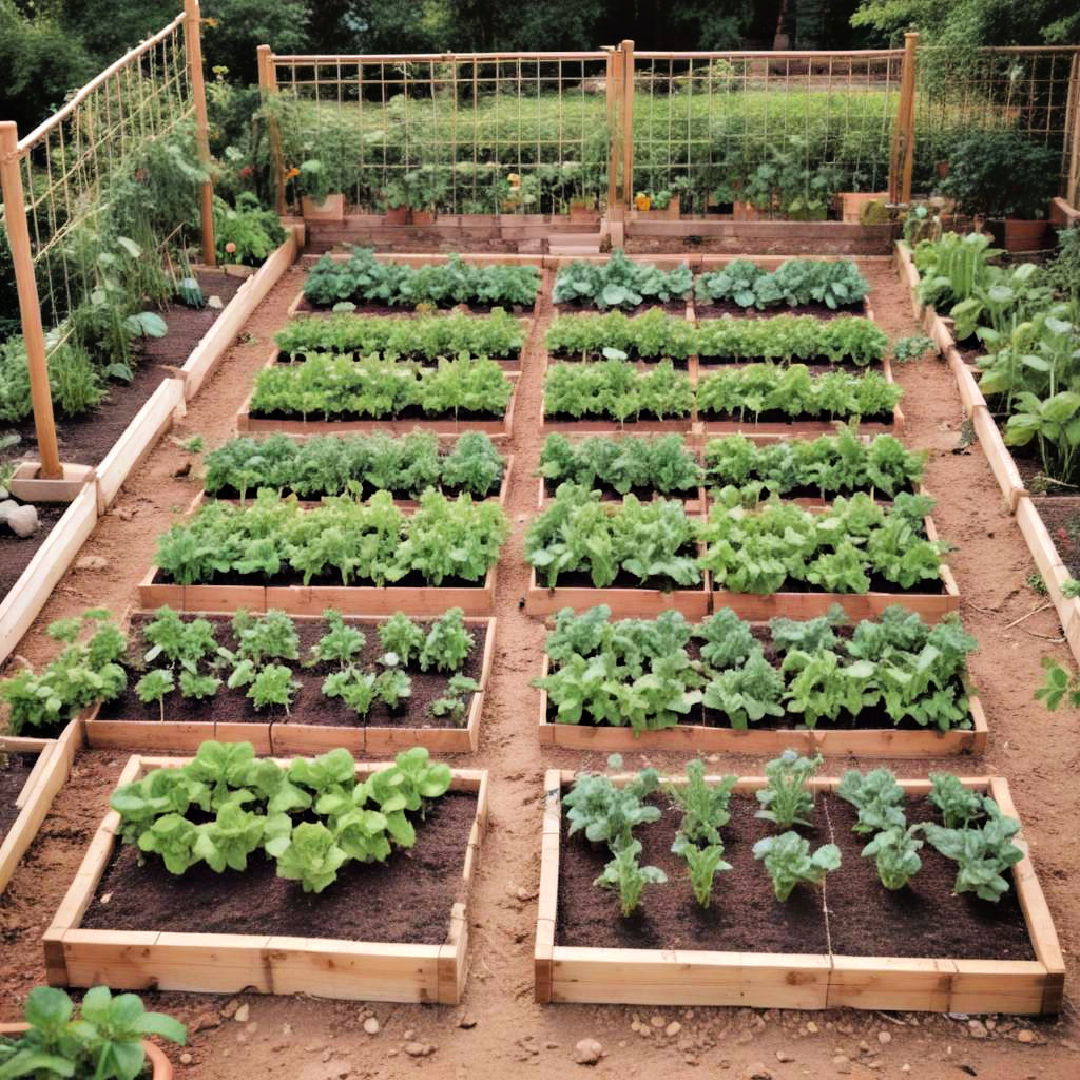
Square foot gardens divide growing spaces into small, organized sections, usually 1-foot squares. This method increases yield by using space efficiently and minimizing weed growth. Each section can host different crops, making it suitable for urban gardeners and those wanting a diverse, productive garden.
Conclusion:
With a little creativity and the right techniques, anyone can turn even the smallest space into a thriving vegetable garden. From raised beds and vertical gardens to innovative systems like hydroponics and aquaponics, these ideas are designed to help maximize your space and boost your yields, similar to practical garden layout ideas that ensure efficient use of space. Whether you’re an experienced gardener or just starting out, these methods can lead to more efficient, bountiful harvests.
Key Takeaways:
- Raised Garden Beds: Efficient use of space with improved soil quality and drainage for higher yields.
- Vertical Gardening: Maximizes space by growing plants upward, ideal for small spaces.
- Container Gardening: Flexible and portable, great for small or urban gardens.
- Hydroponic Systems: Soil-free growing method that boosts growth speed and productivity.
- Square Foot Gardening: Strategic, intensive planting method that maximizes small plots.
- Companion Planting: Pairing plants to enhance growth and deter pests naturally.
- Innovative Systems: Techniques like aquaponics, permaculture, and self-watering containers for modern, efficient gardening.
- Seasonal and Space Optimization: Use of succession planting, cold frames, and row covers to extend growing seasons and increase yields.
What to Do Next:
- Assess your available space and consider which gardening method fits your environment and needs.
- Experiment with vertical or container gardening if space is limited.
- Try advanced systems like hydroponics or aquaponics for higher efficiency.
- Incorporate companion planting and succession planting to optimize growth and harvest times.
- Start small and expand as you gain confidence, experimenting with different methods to find what works best for your space and climate.

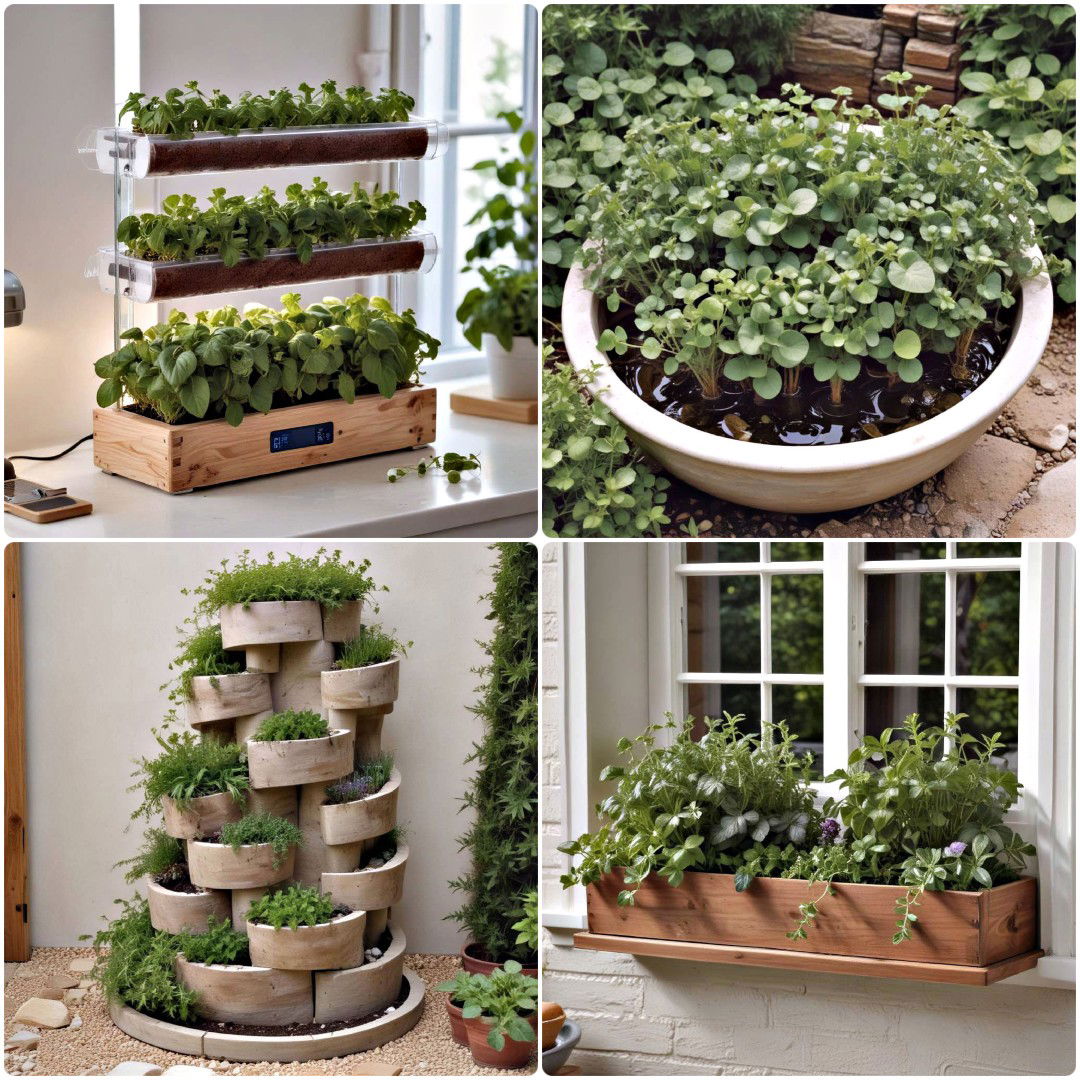
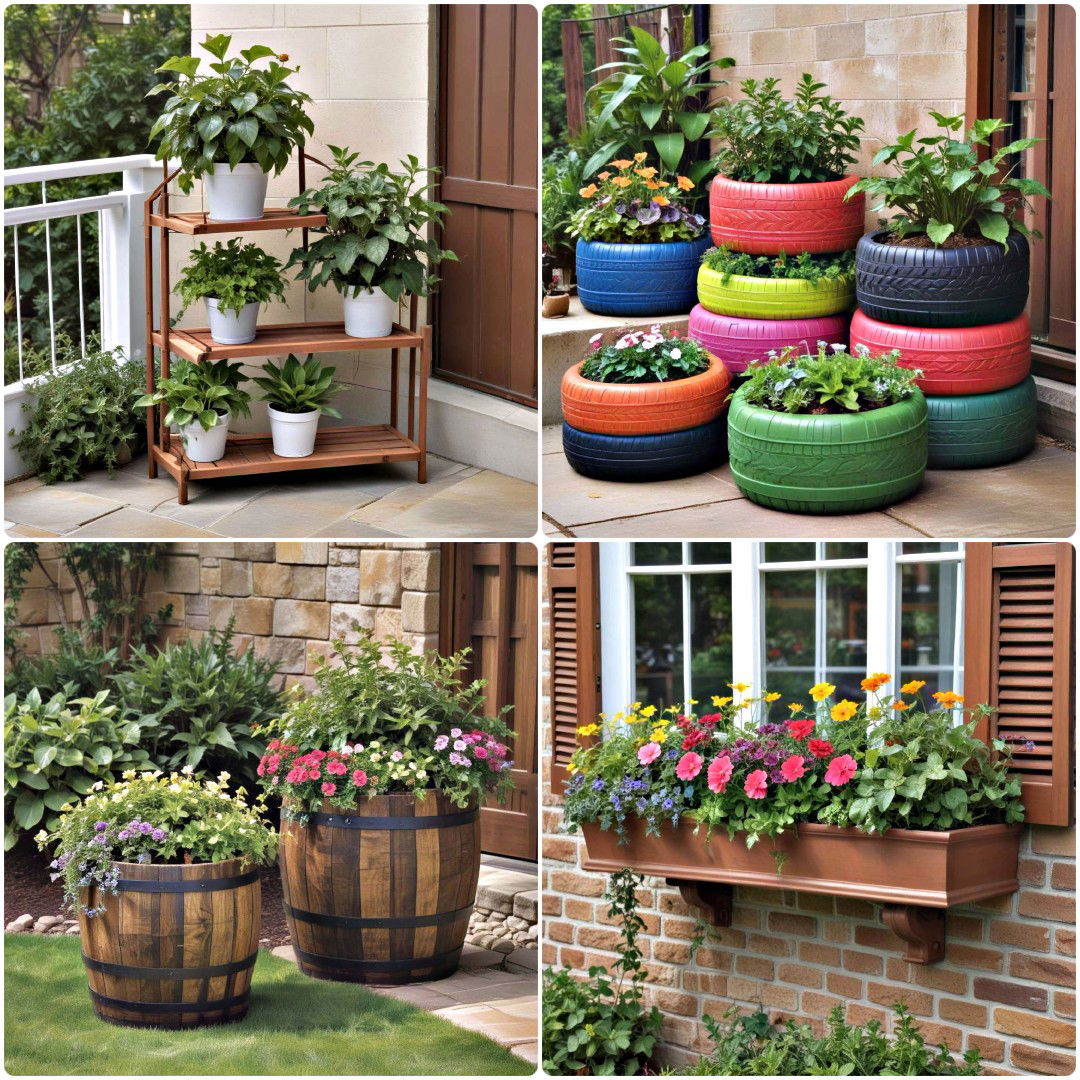
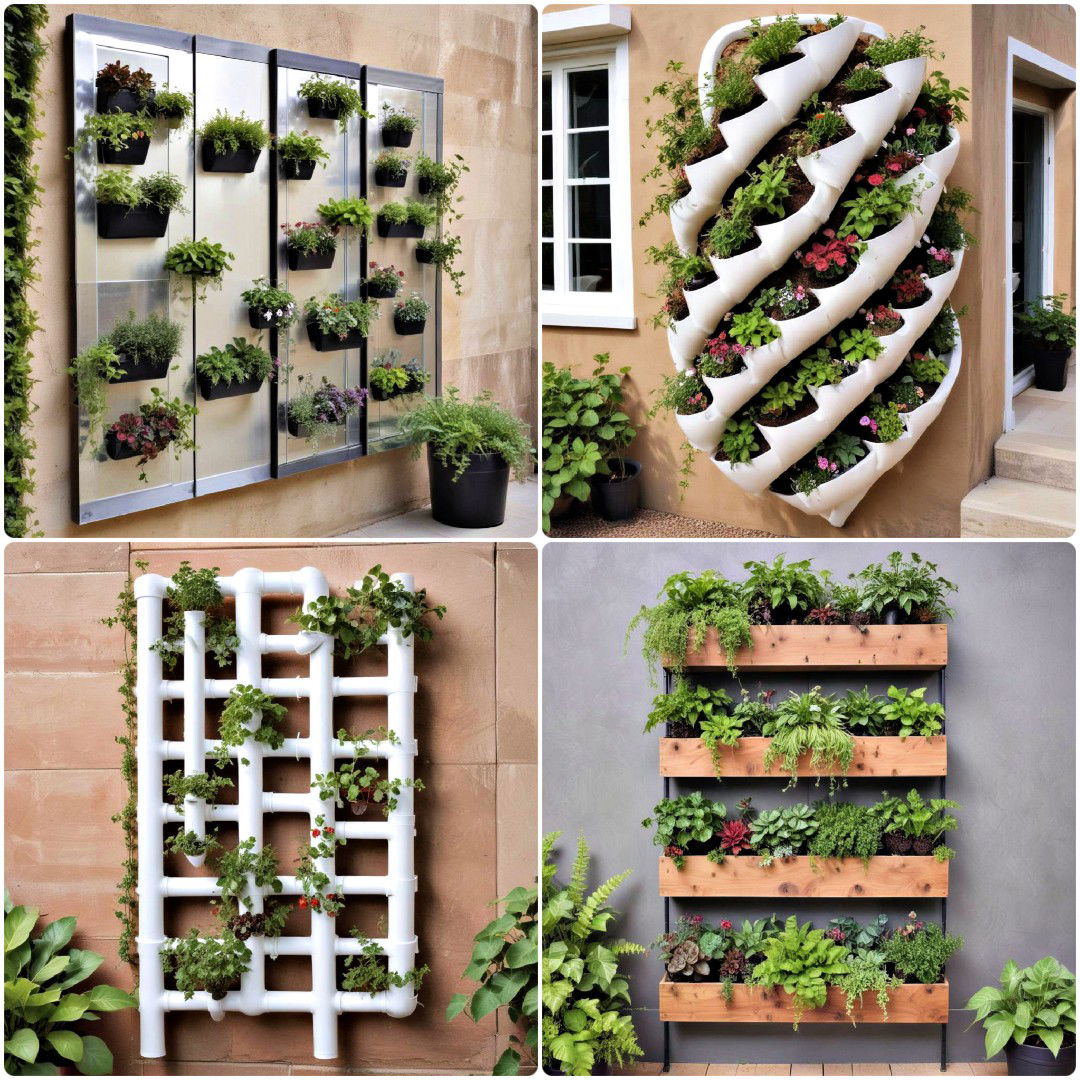
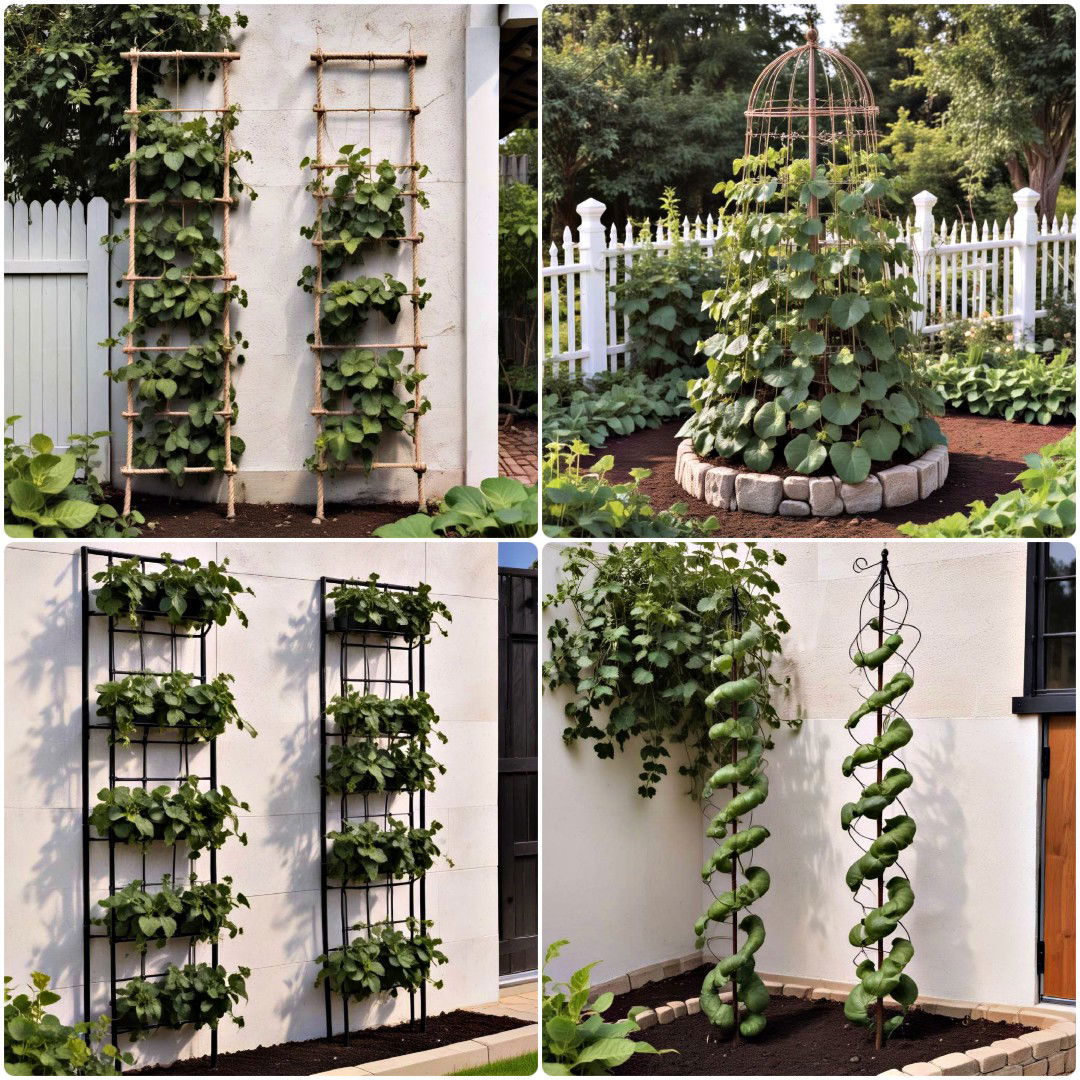
Leave a Reply